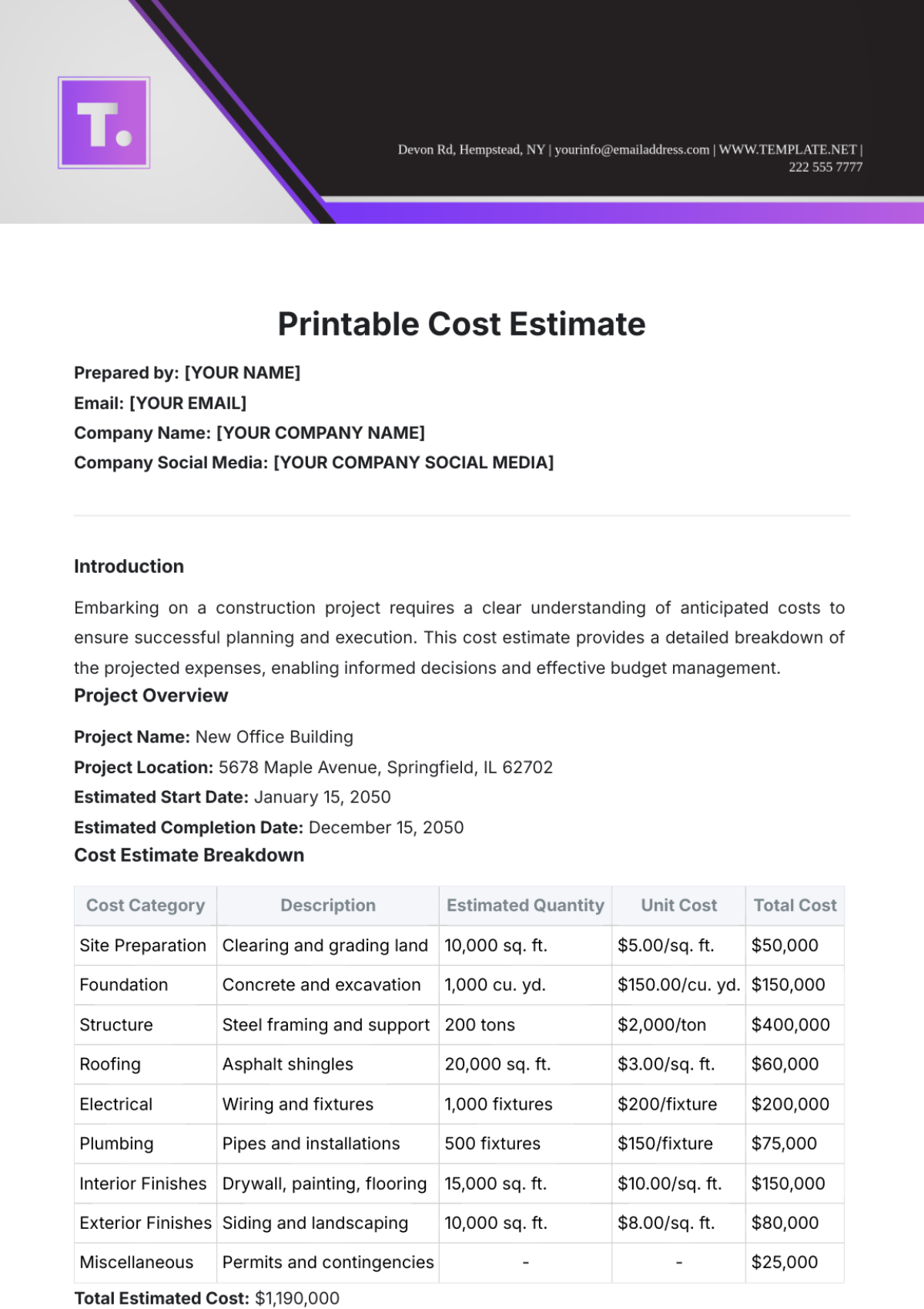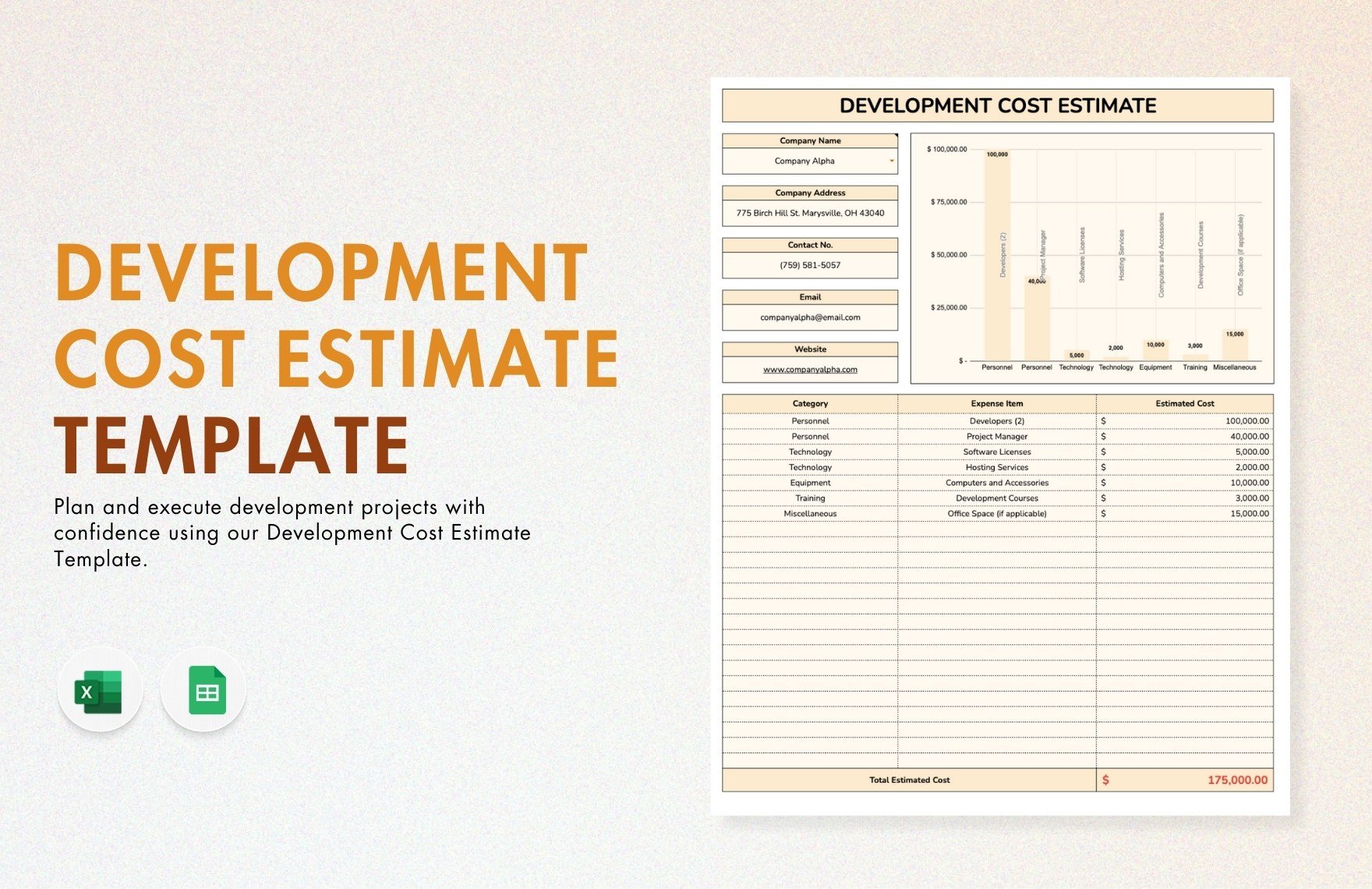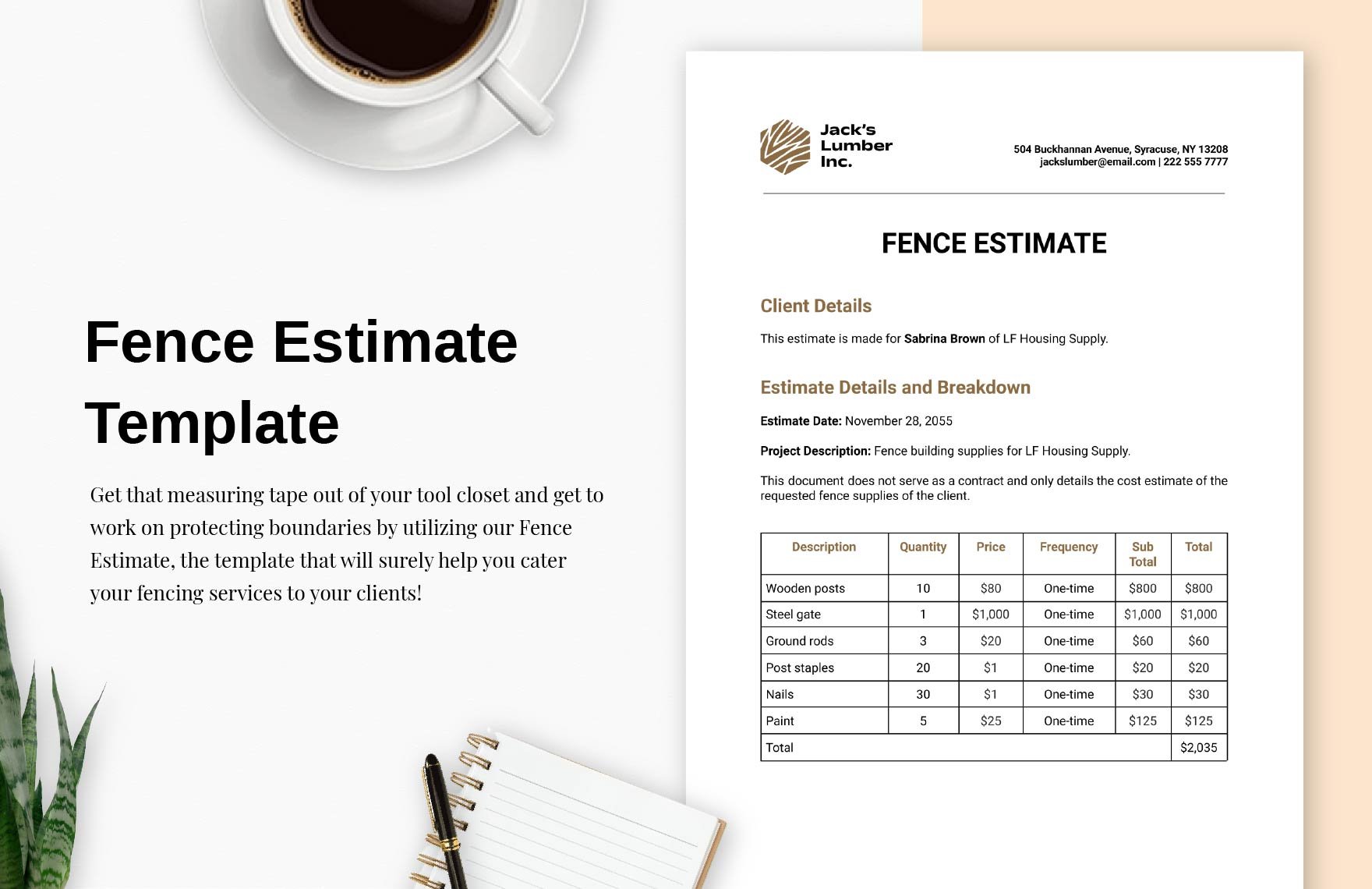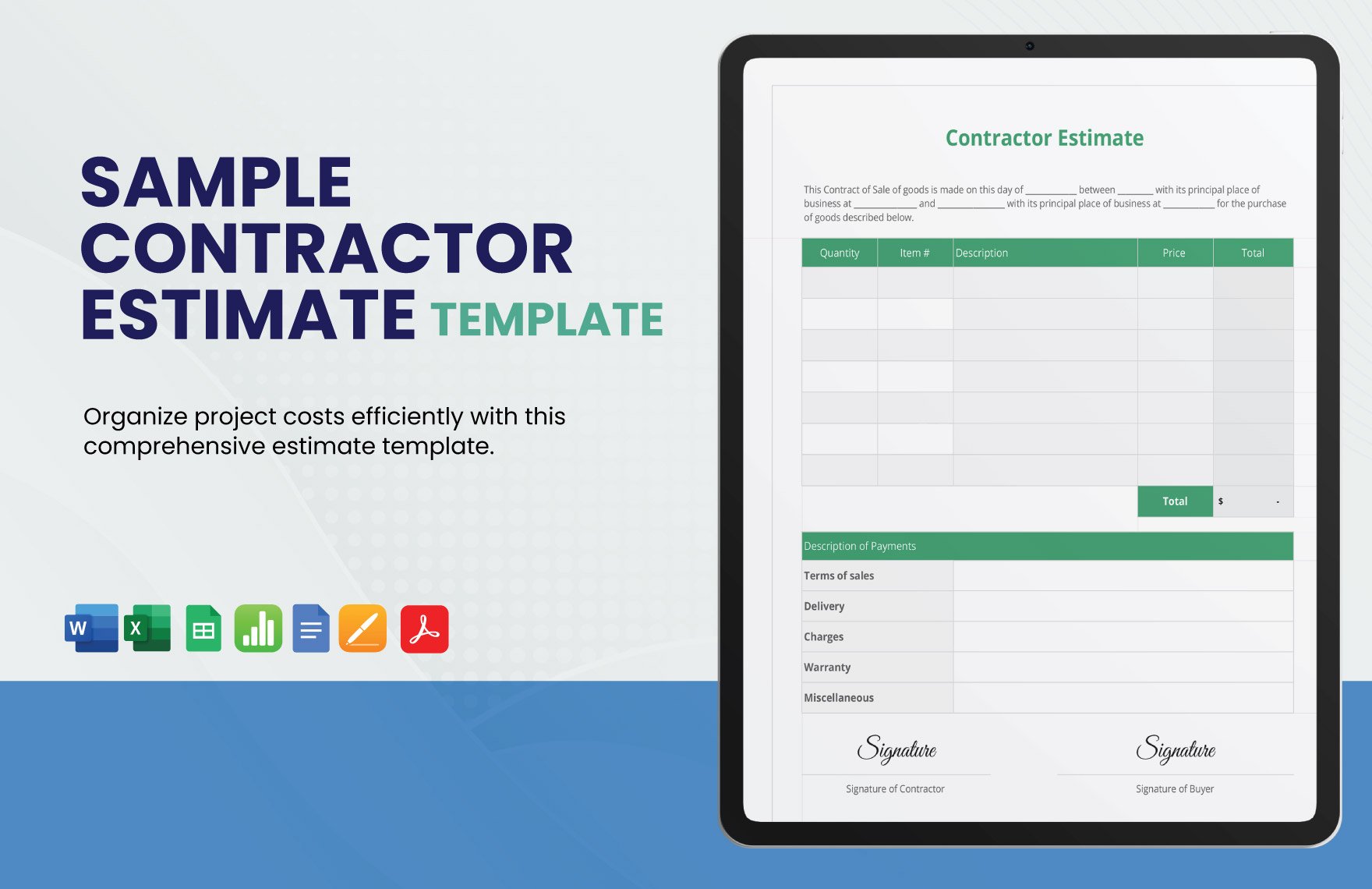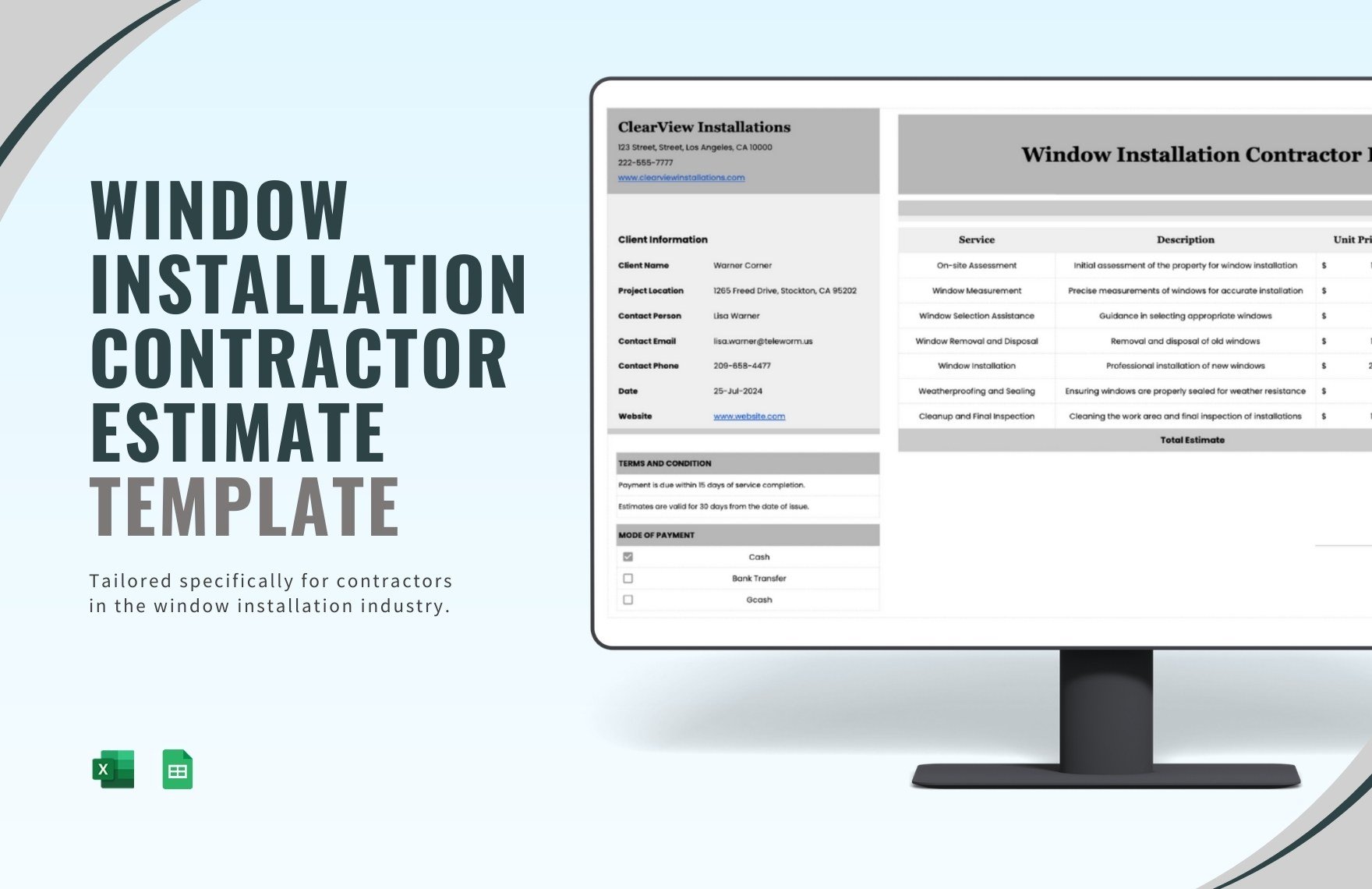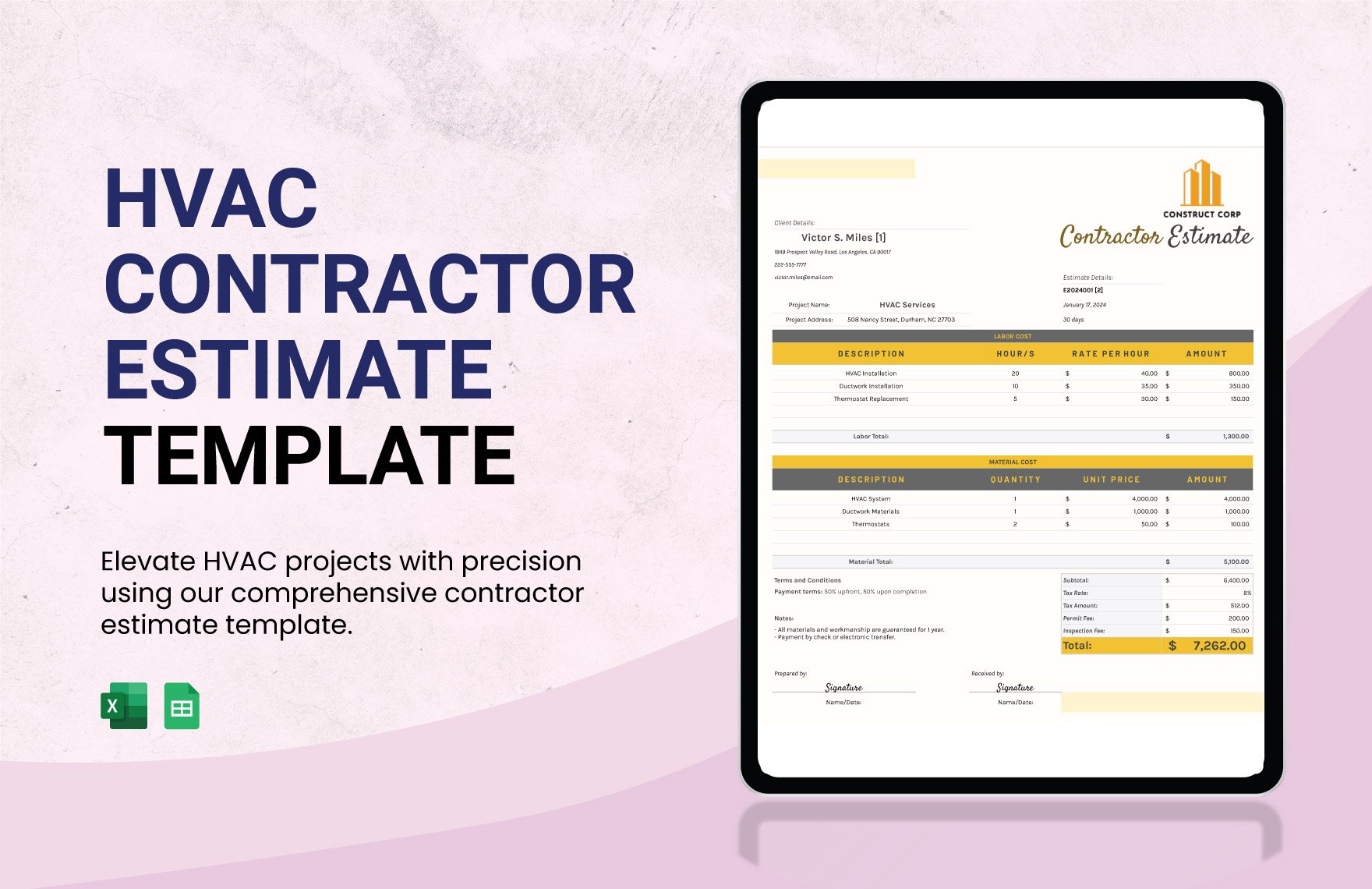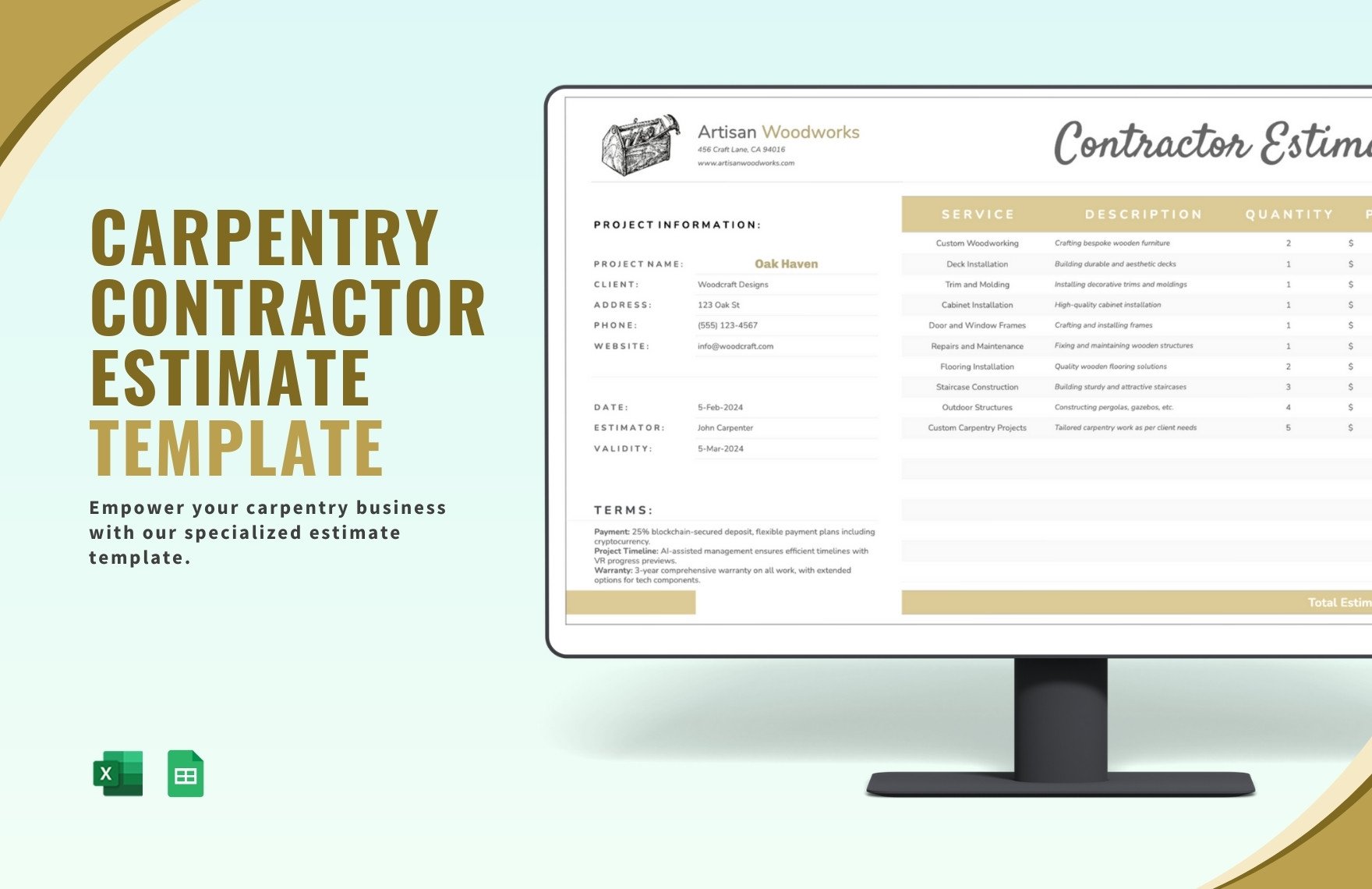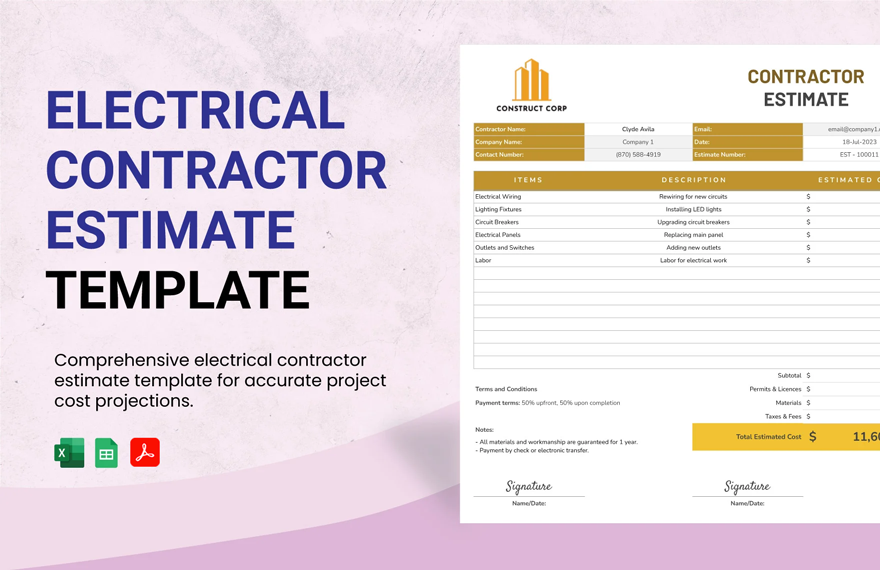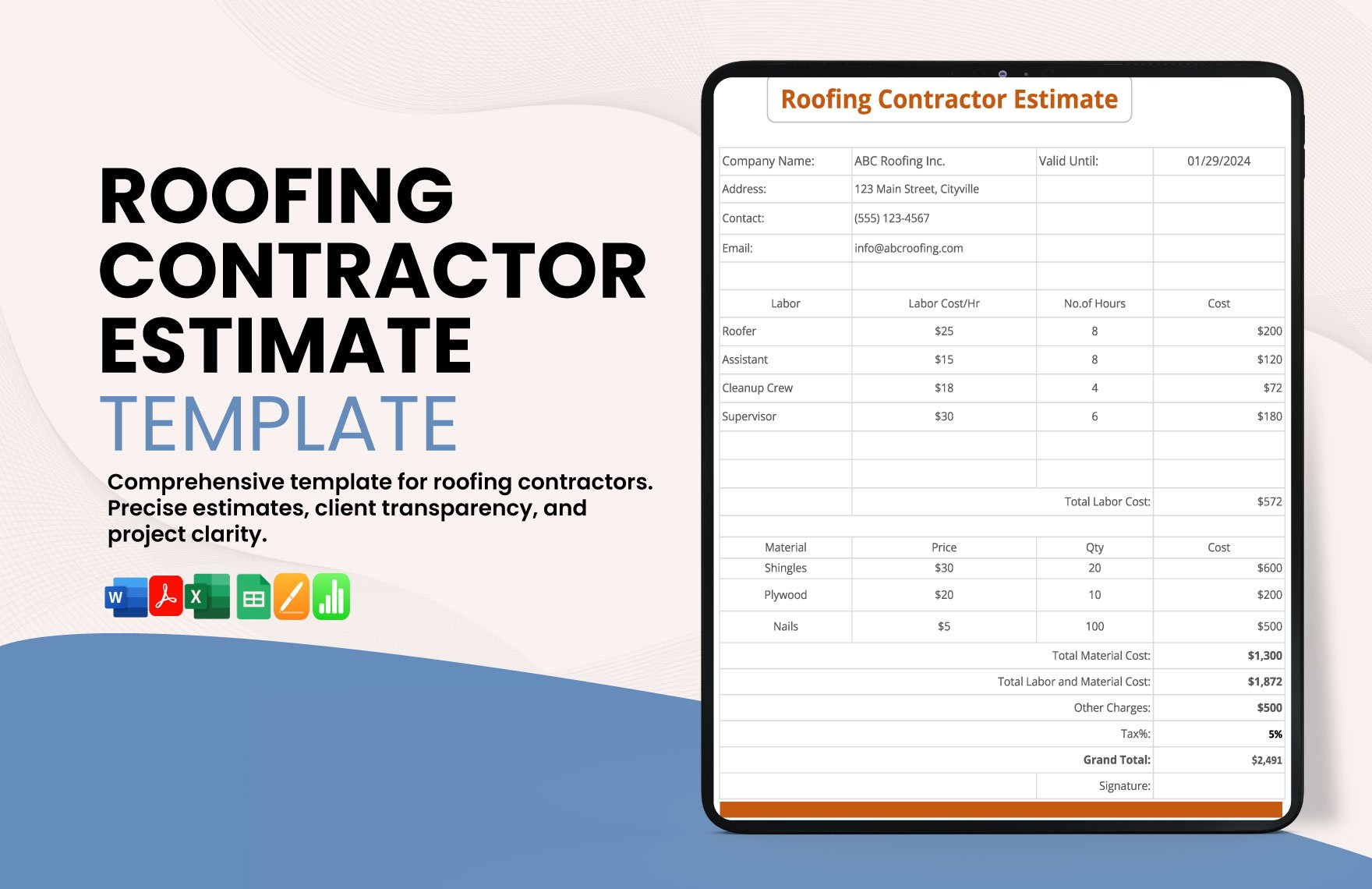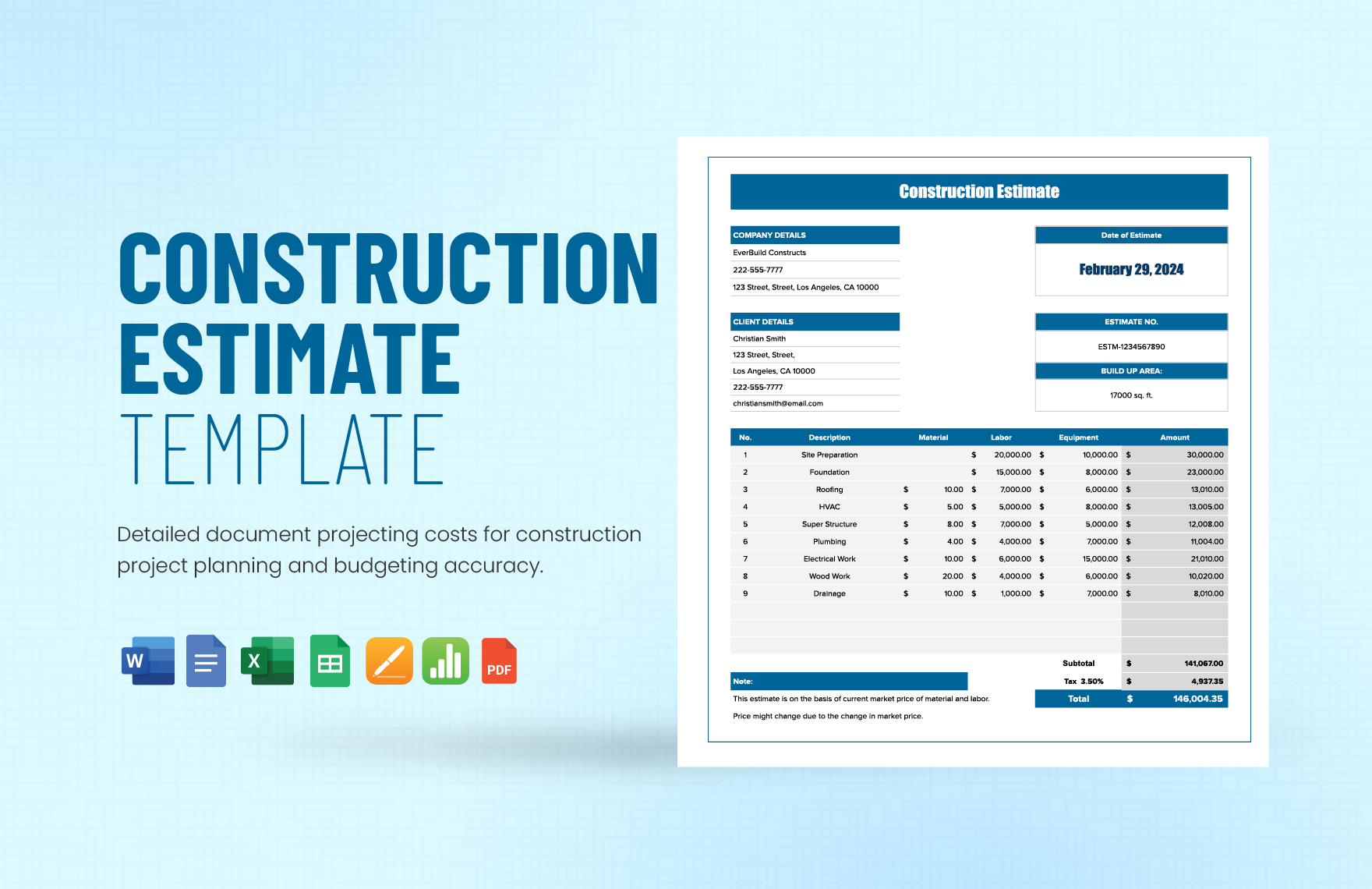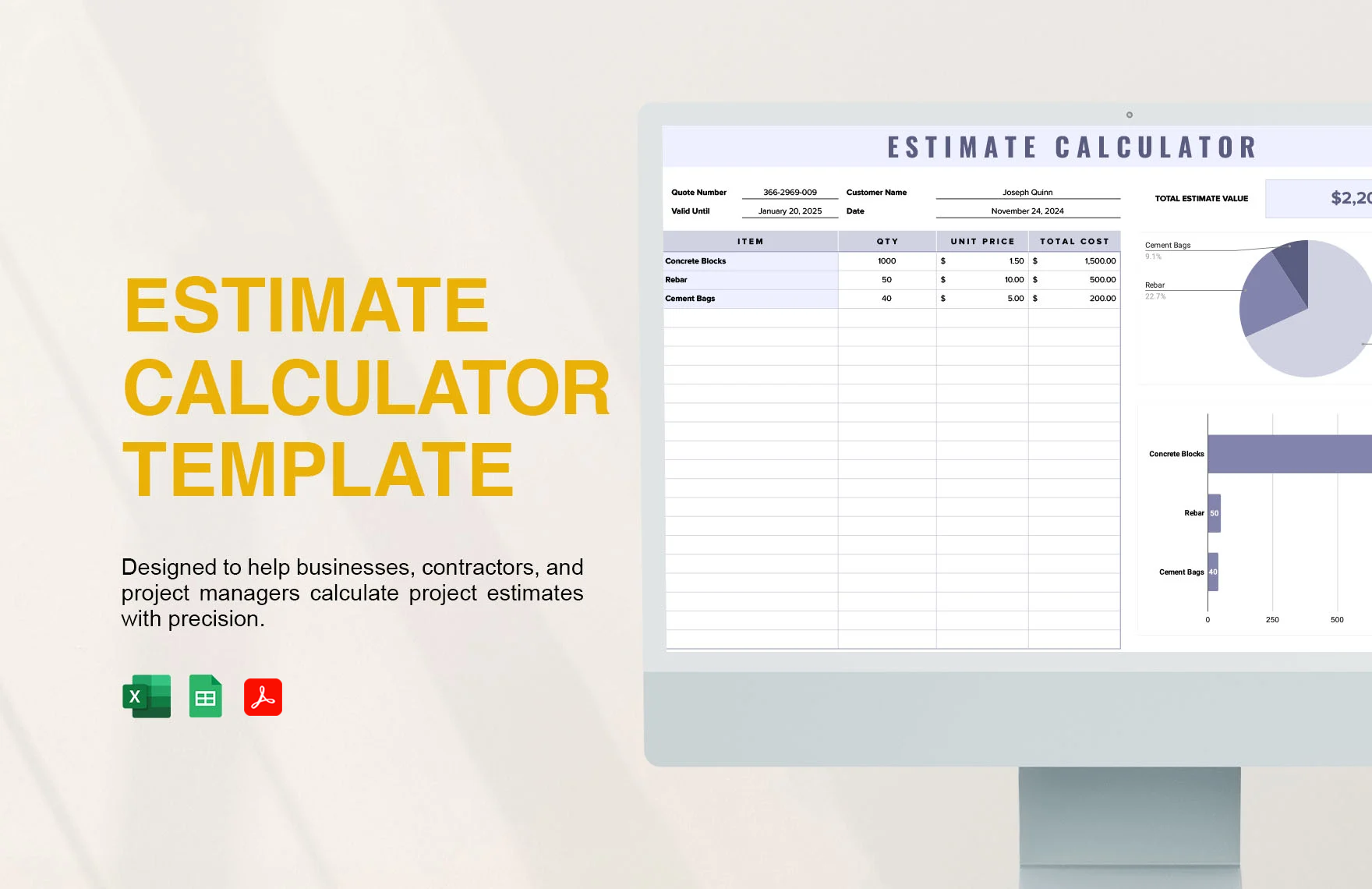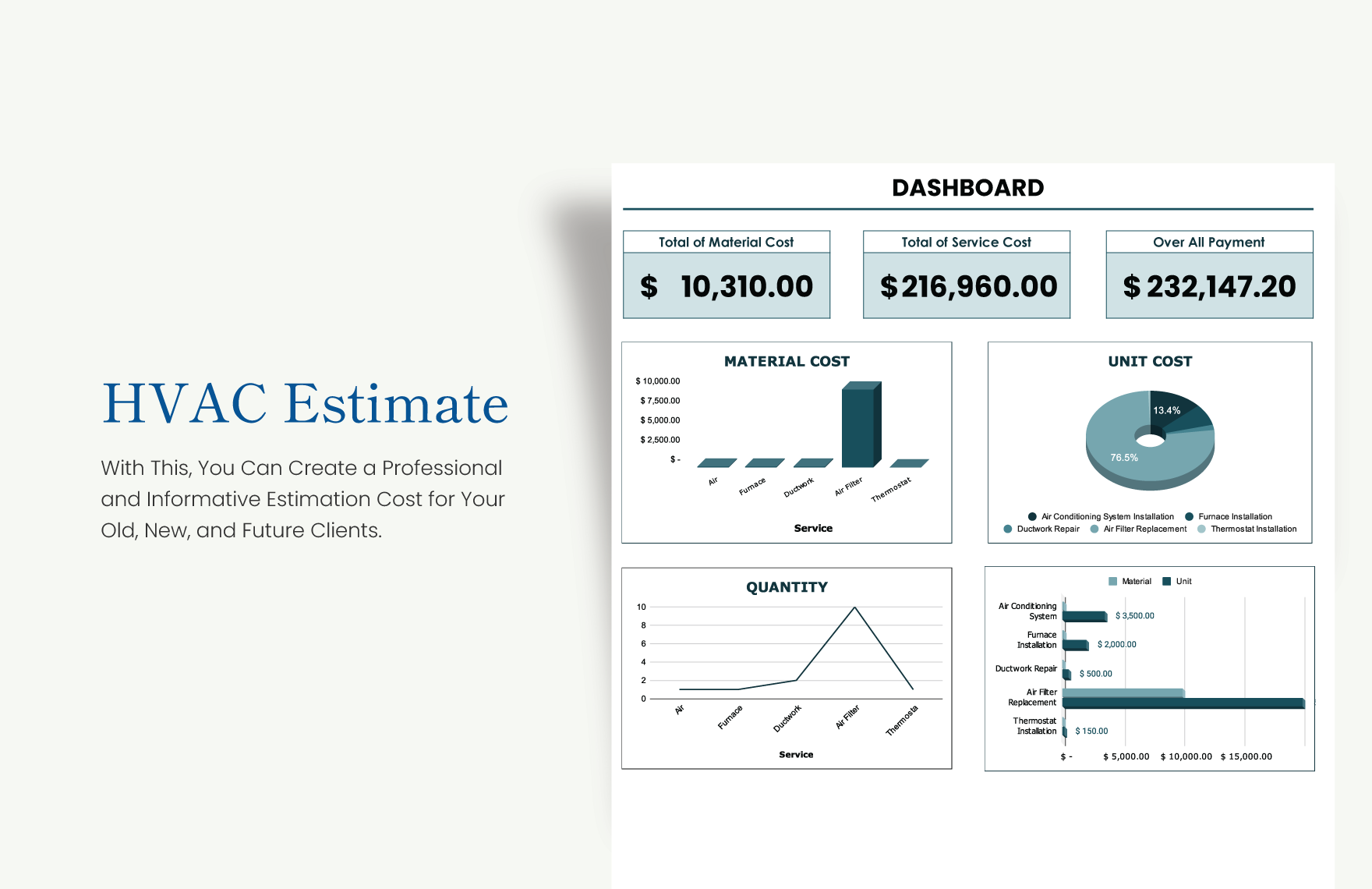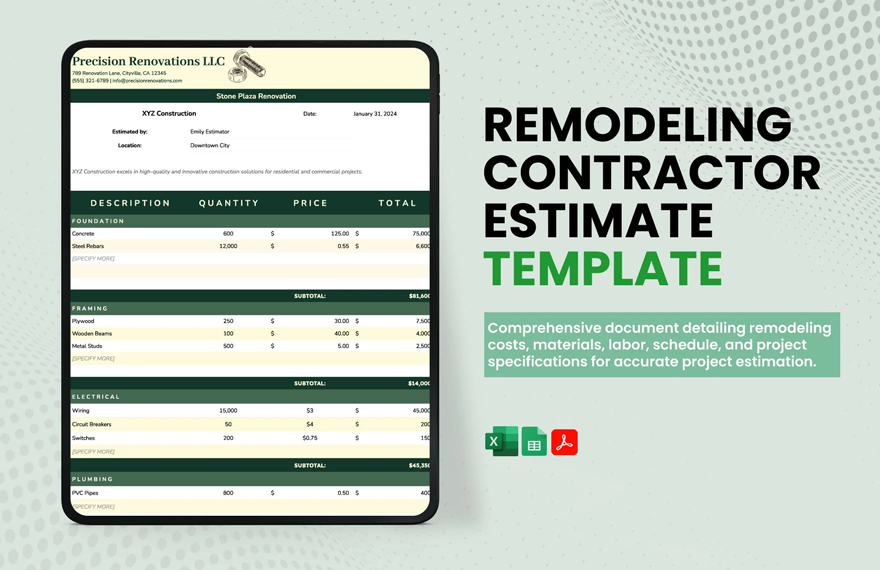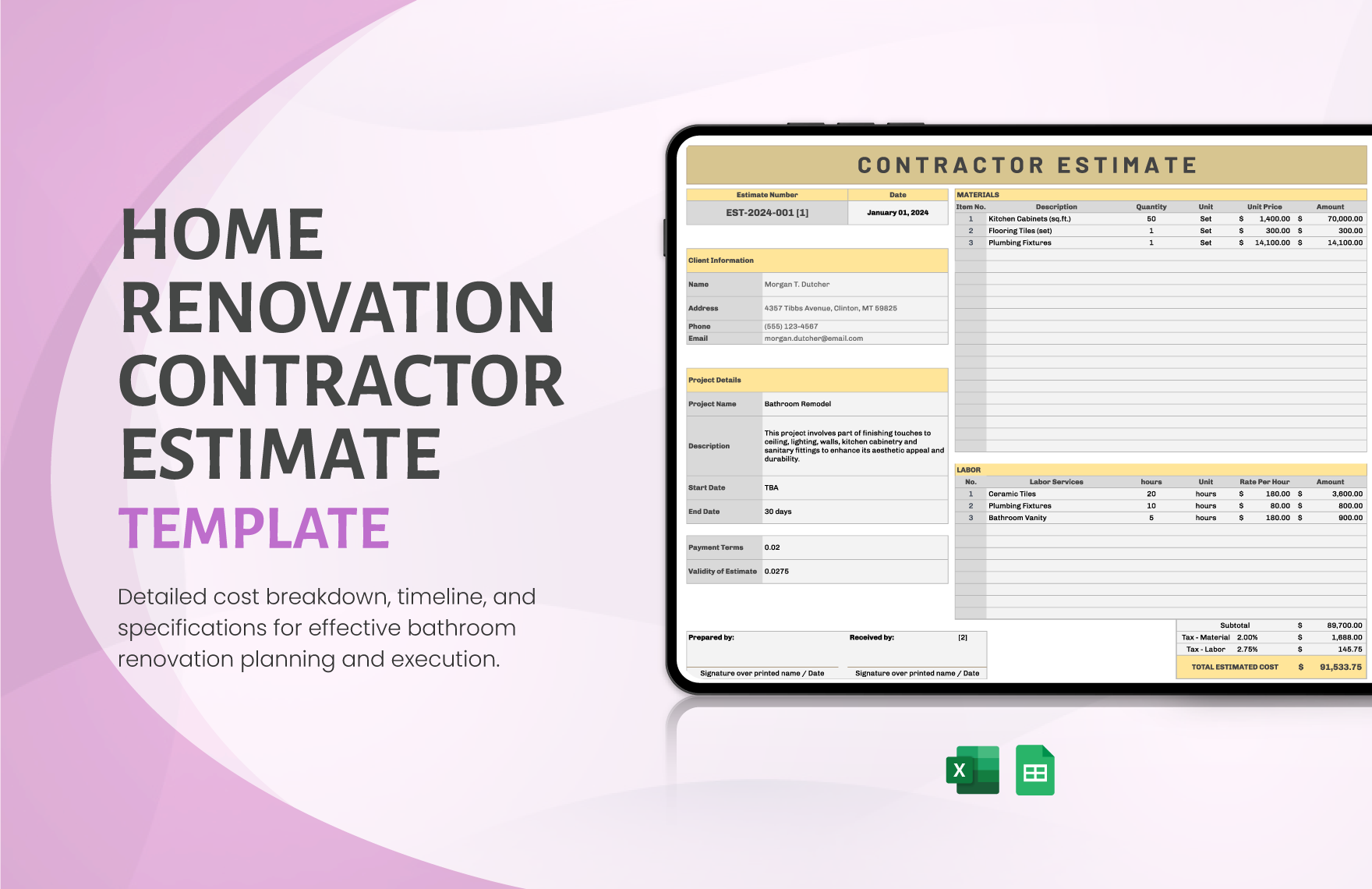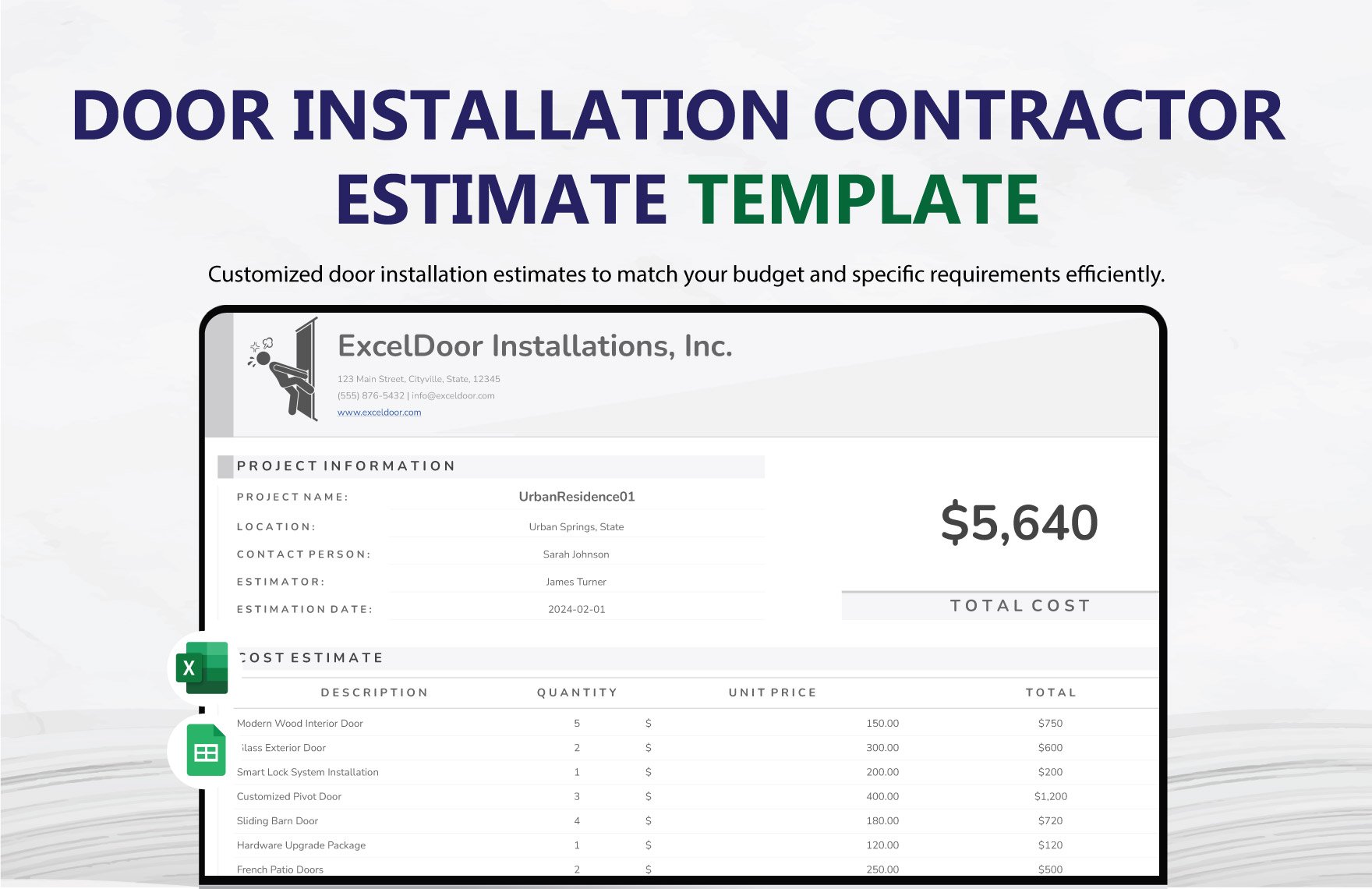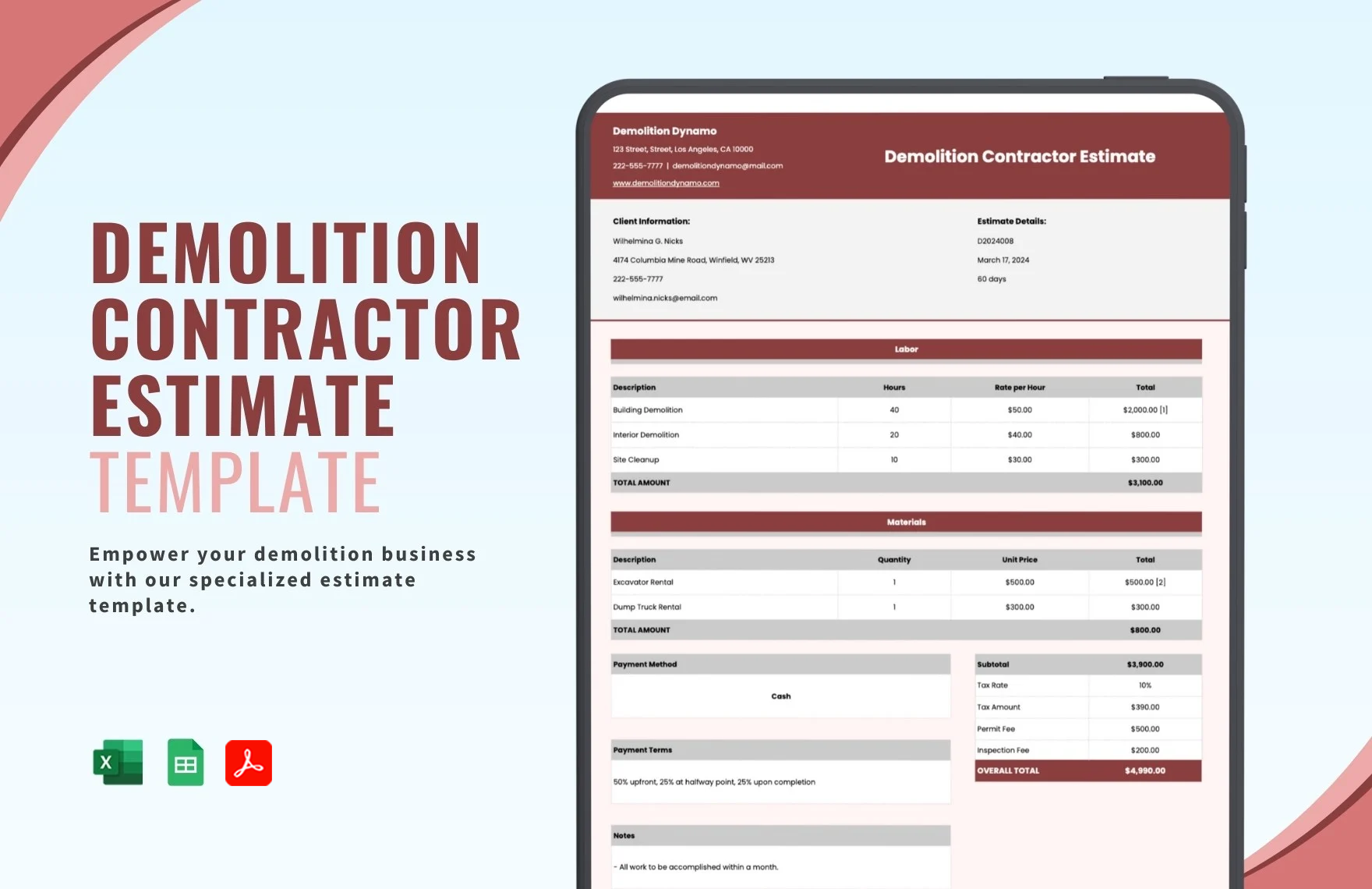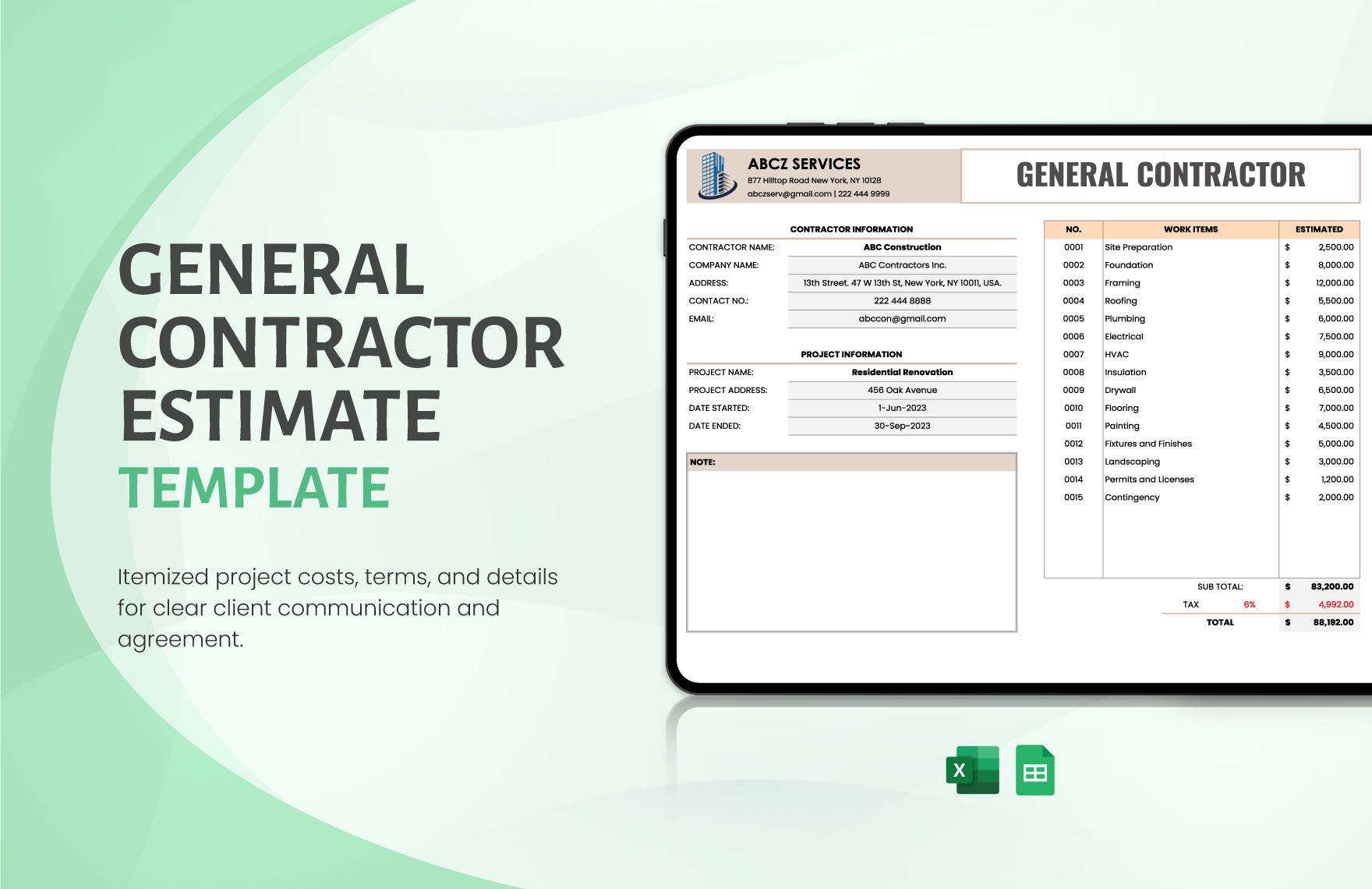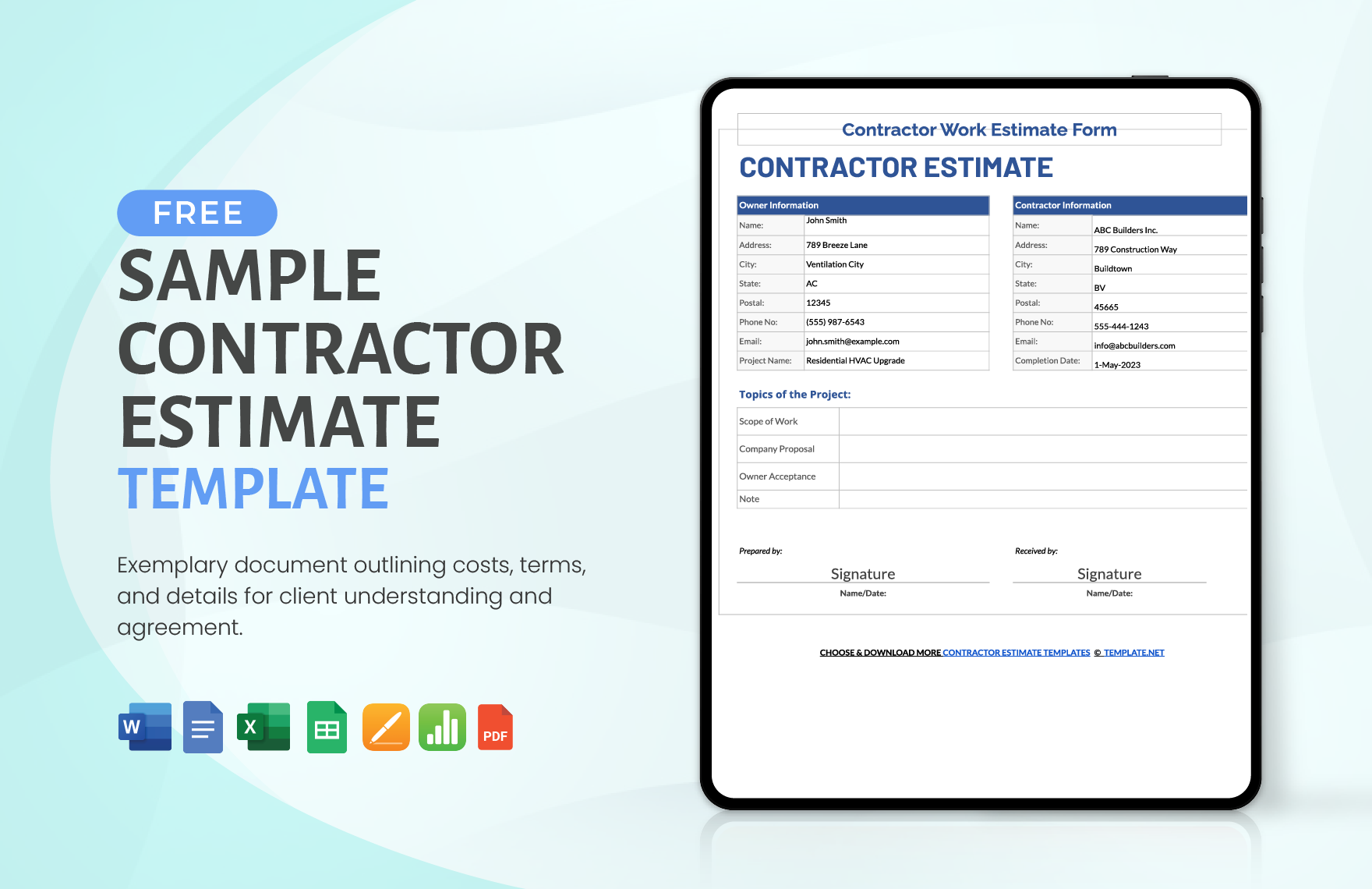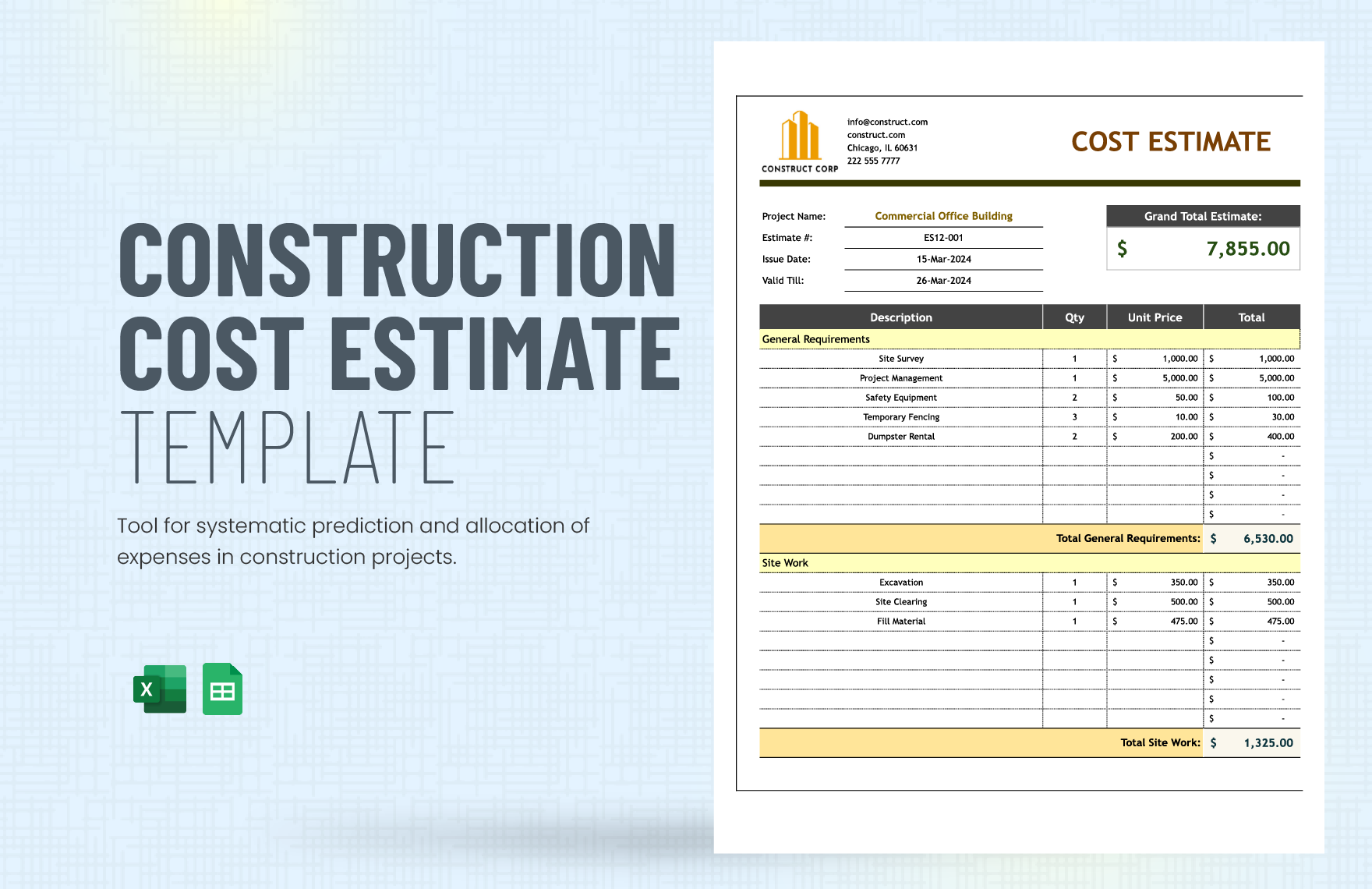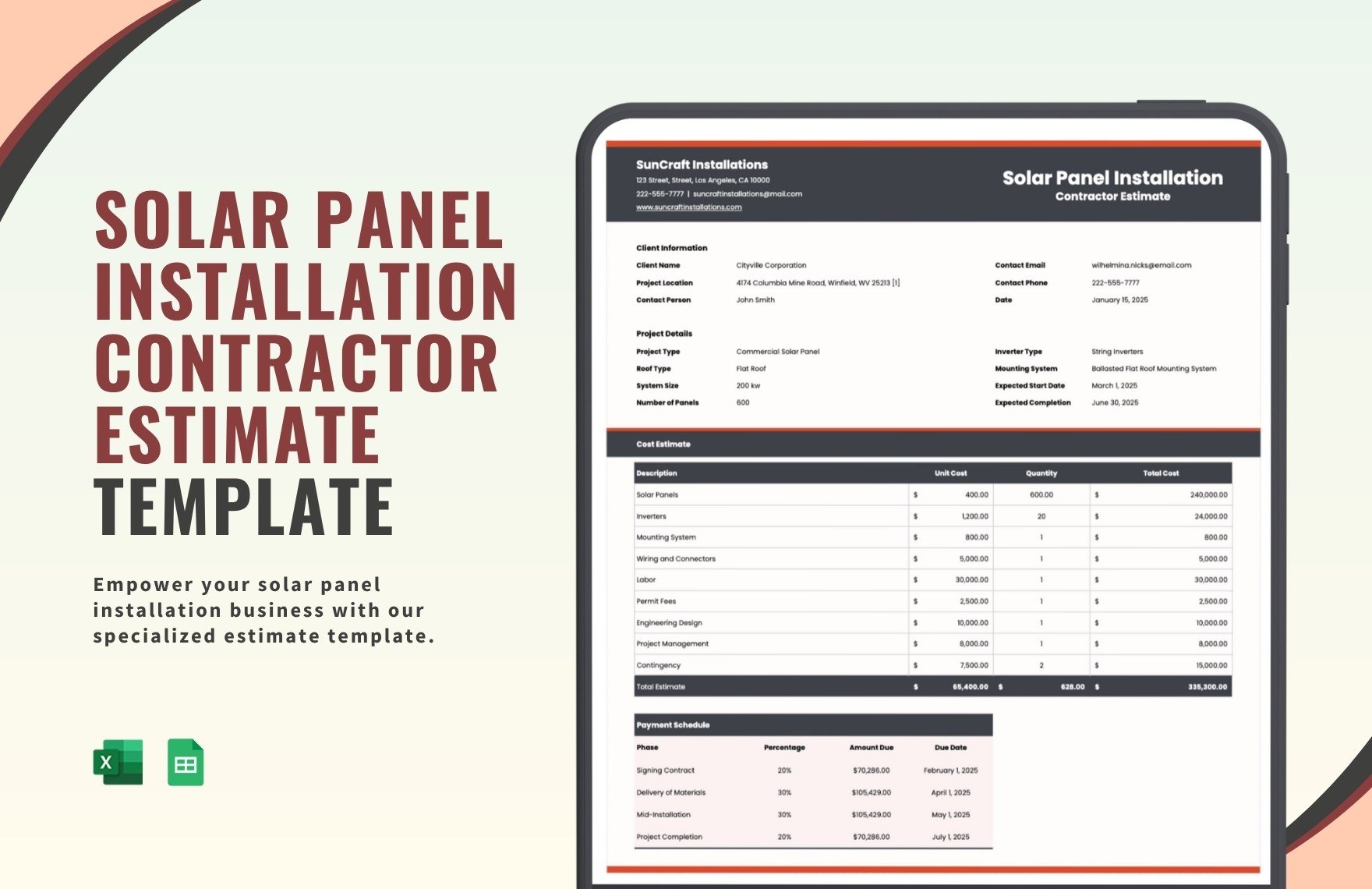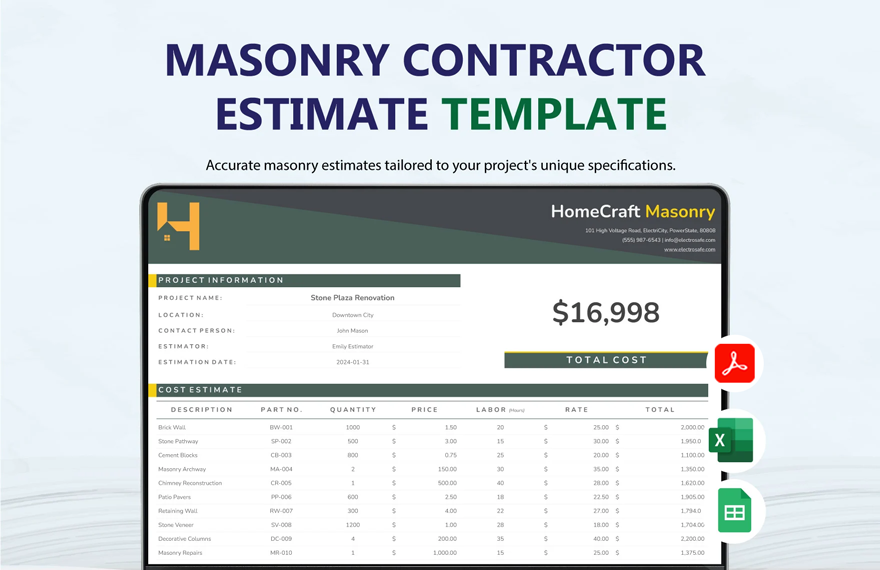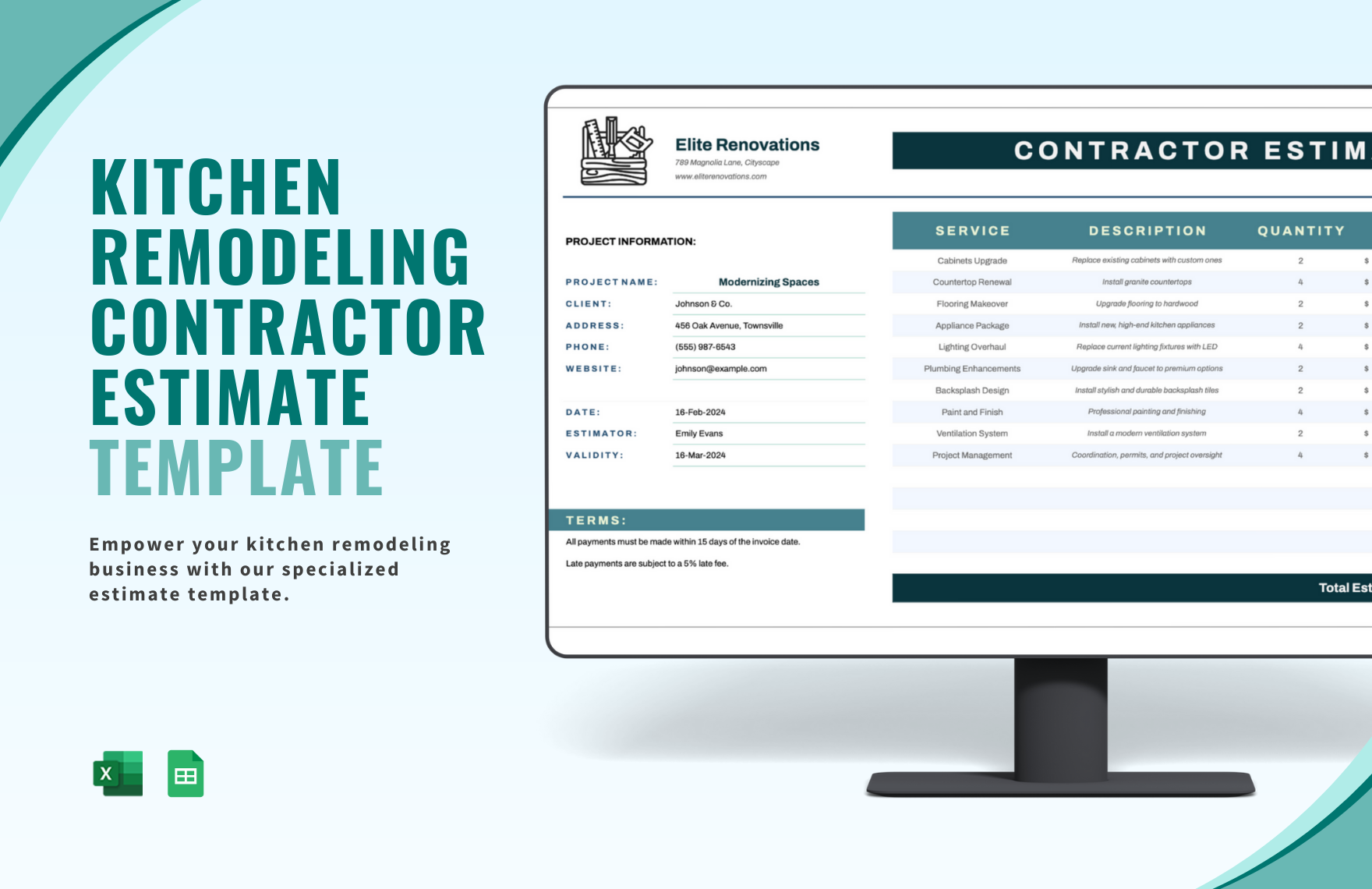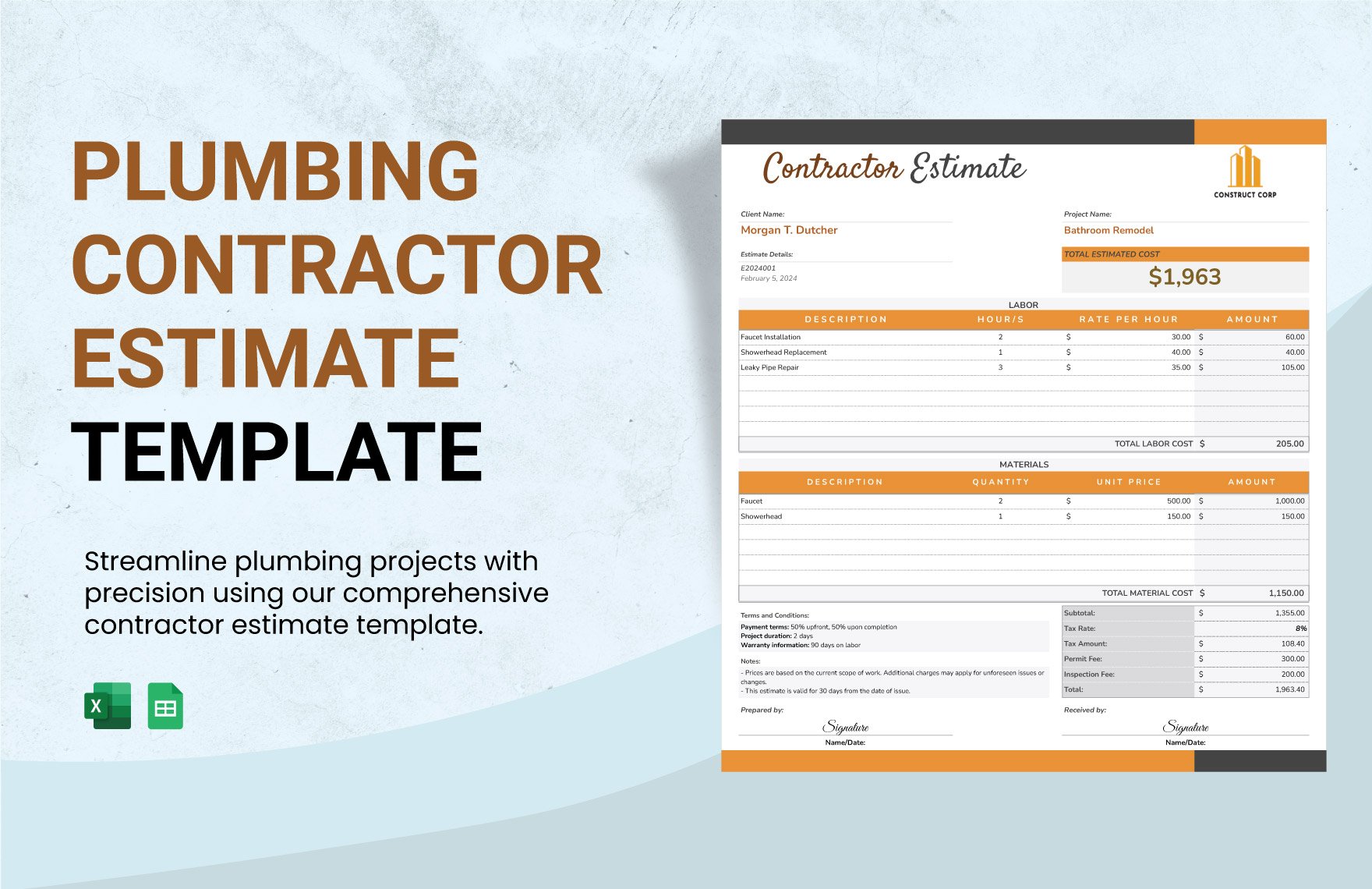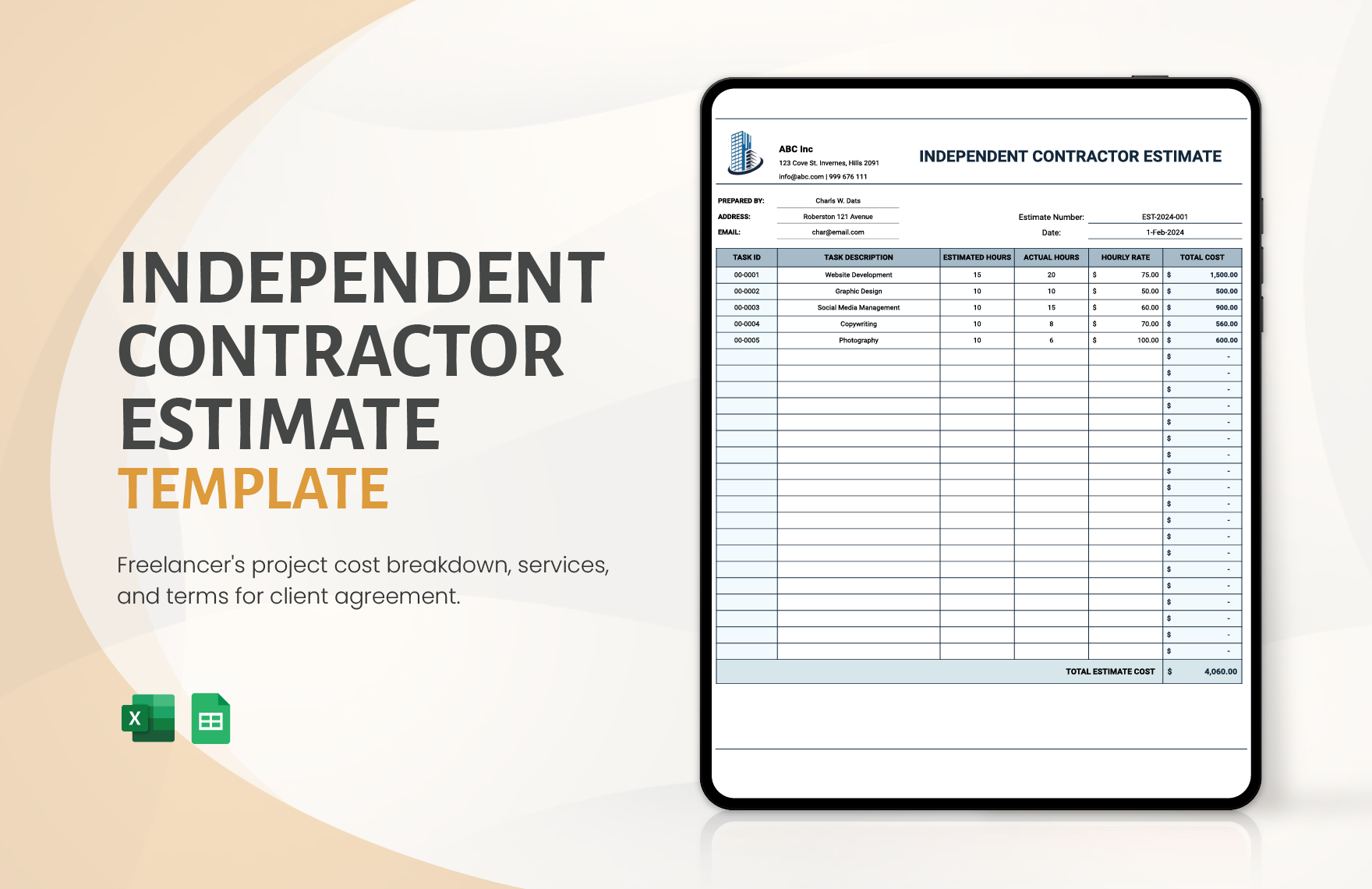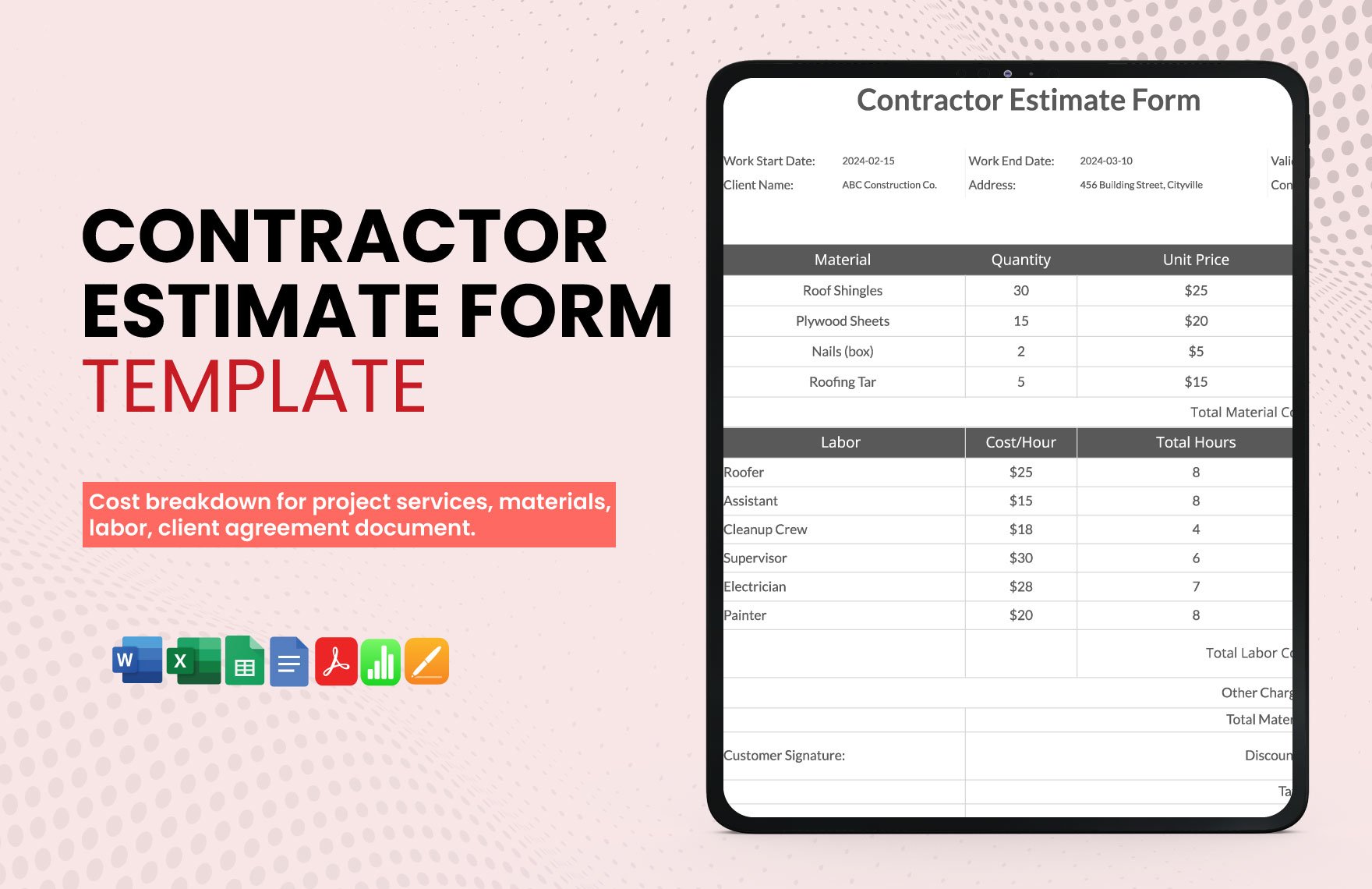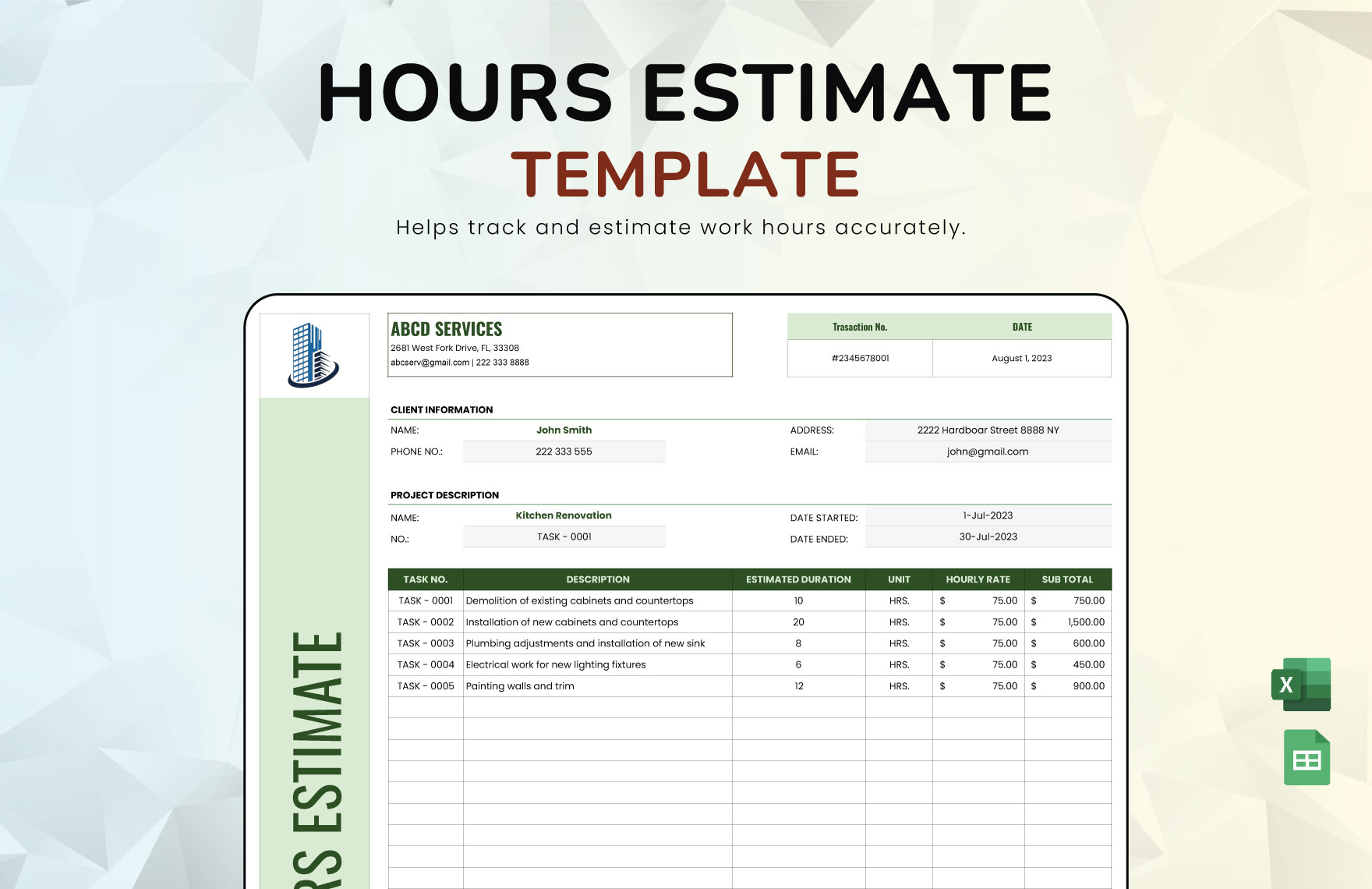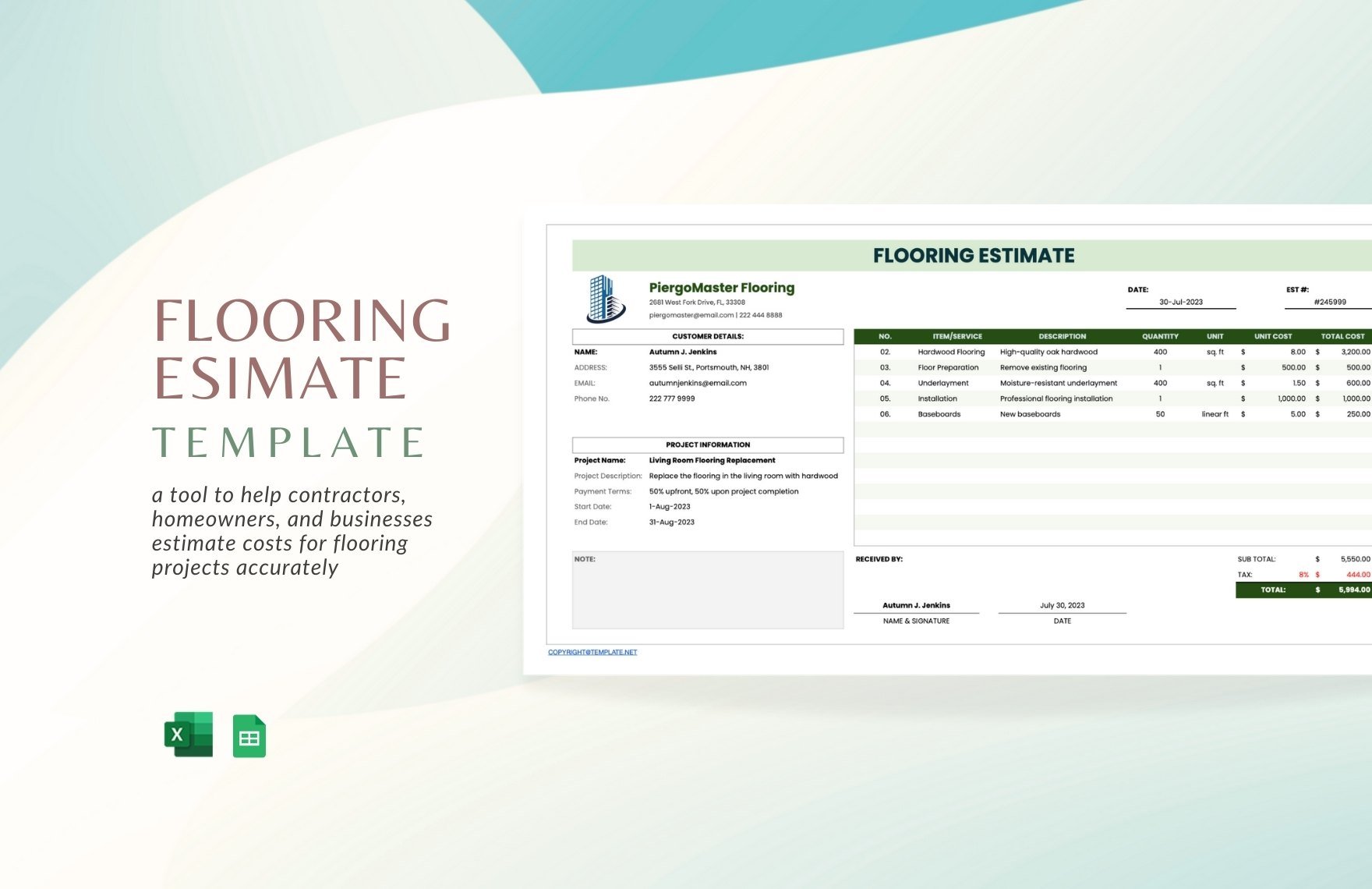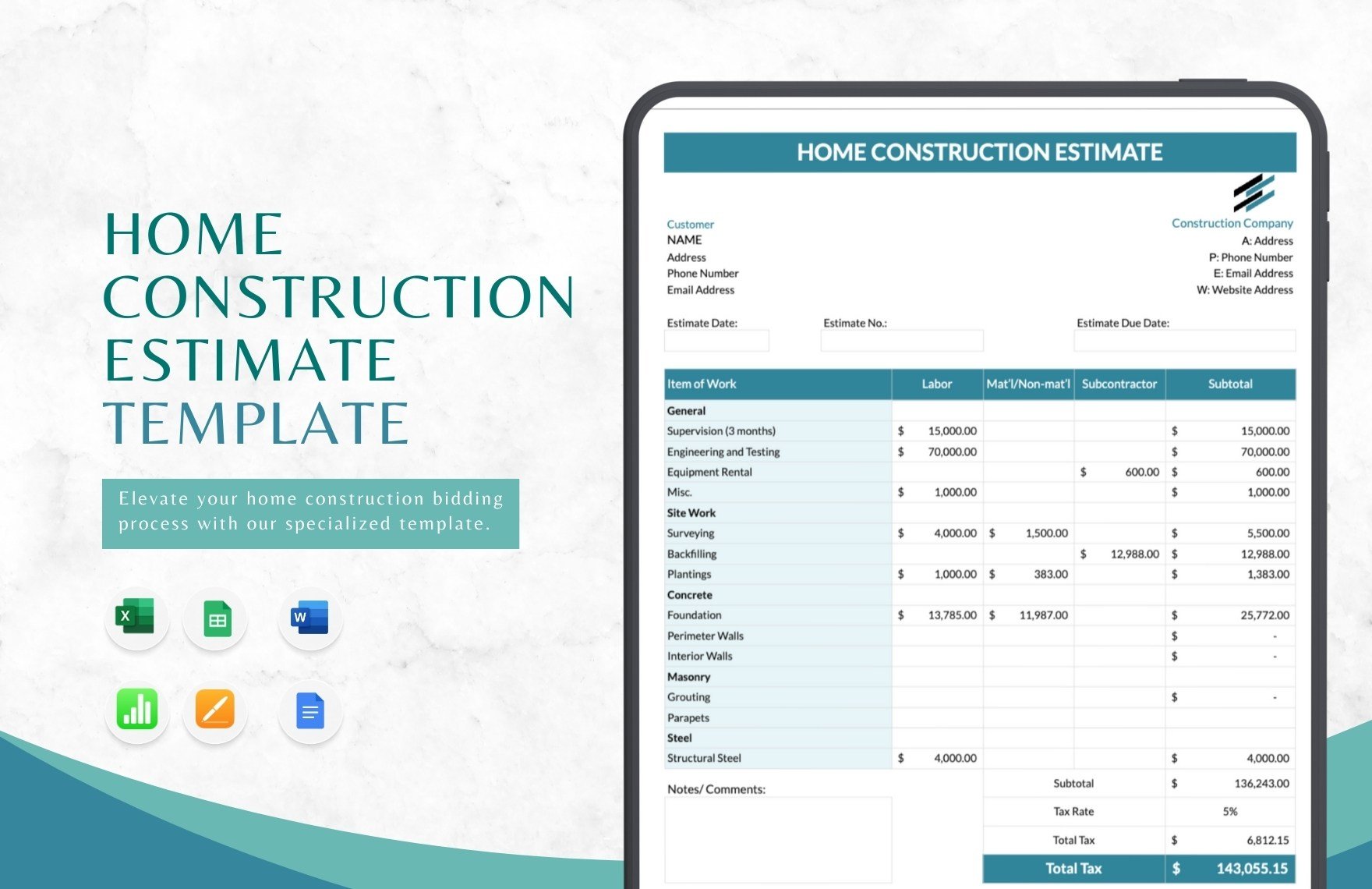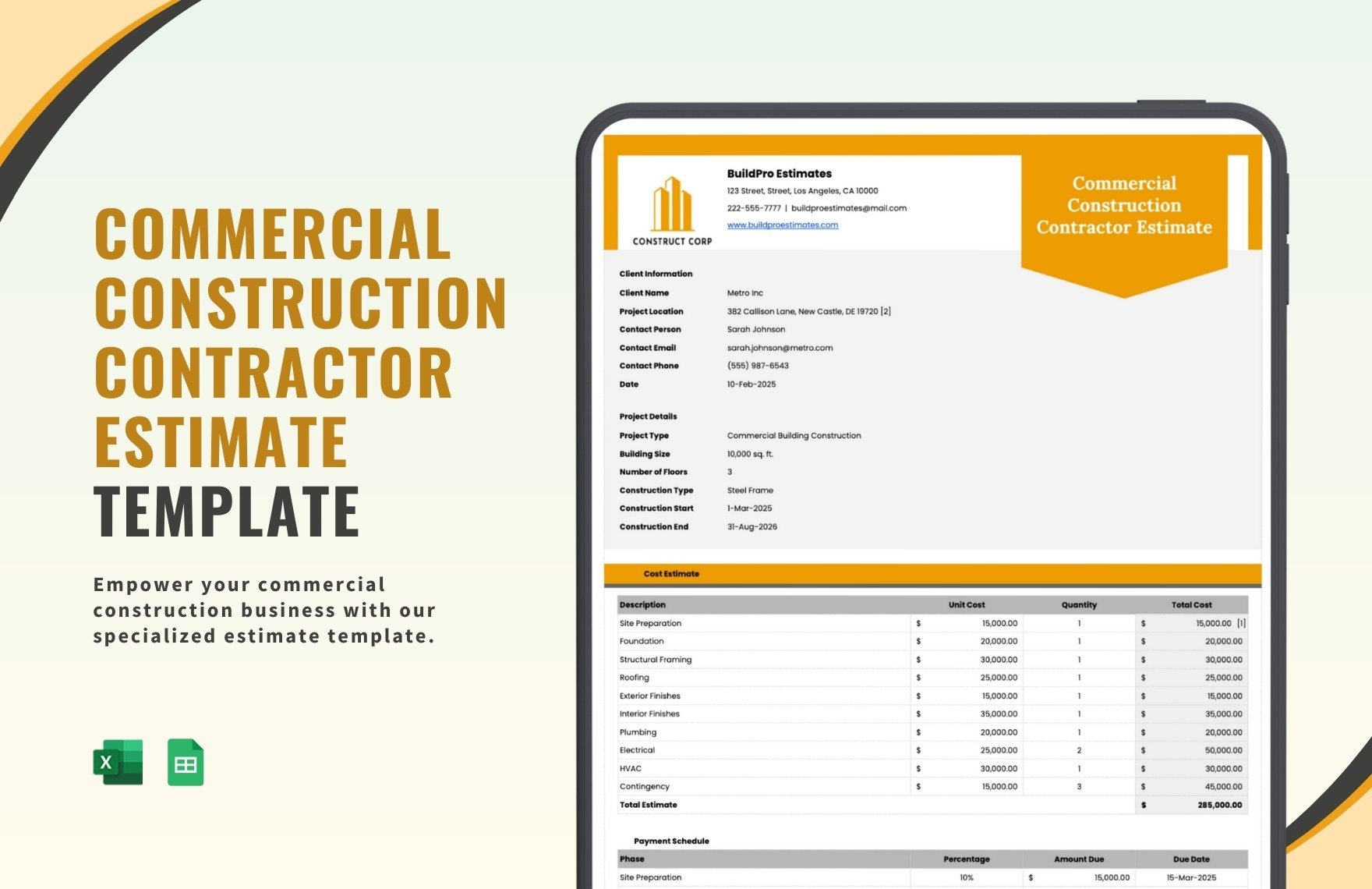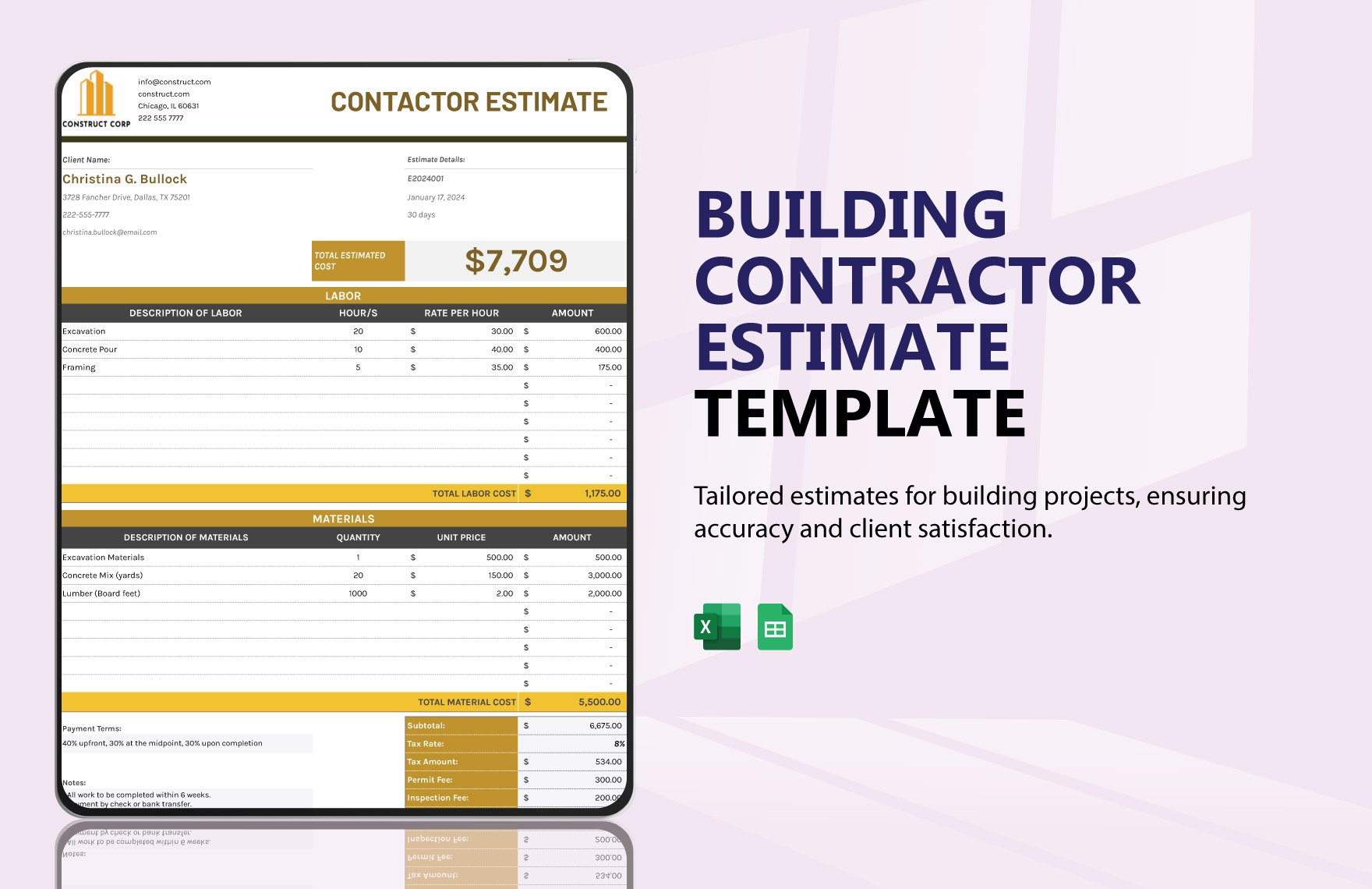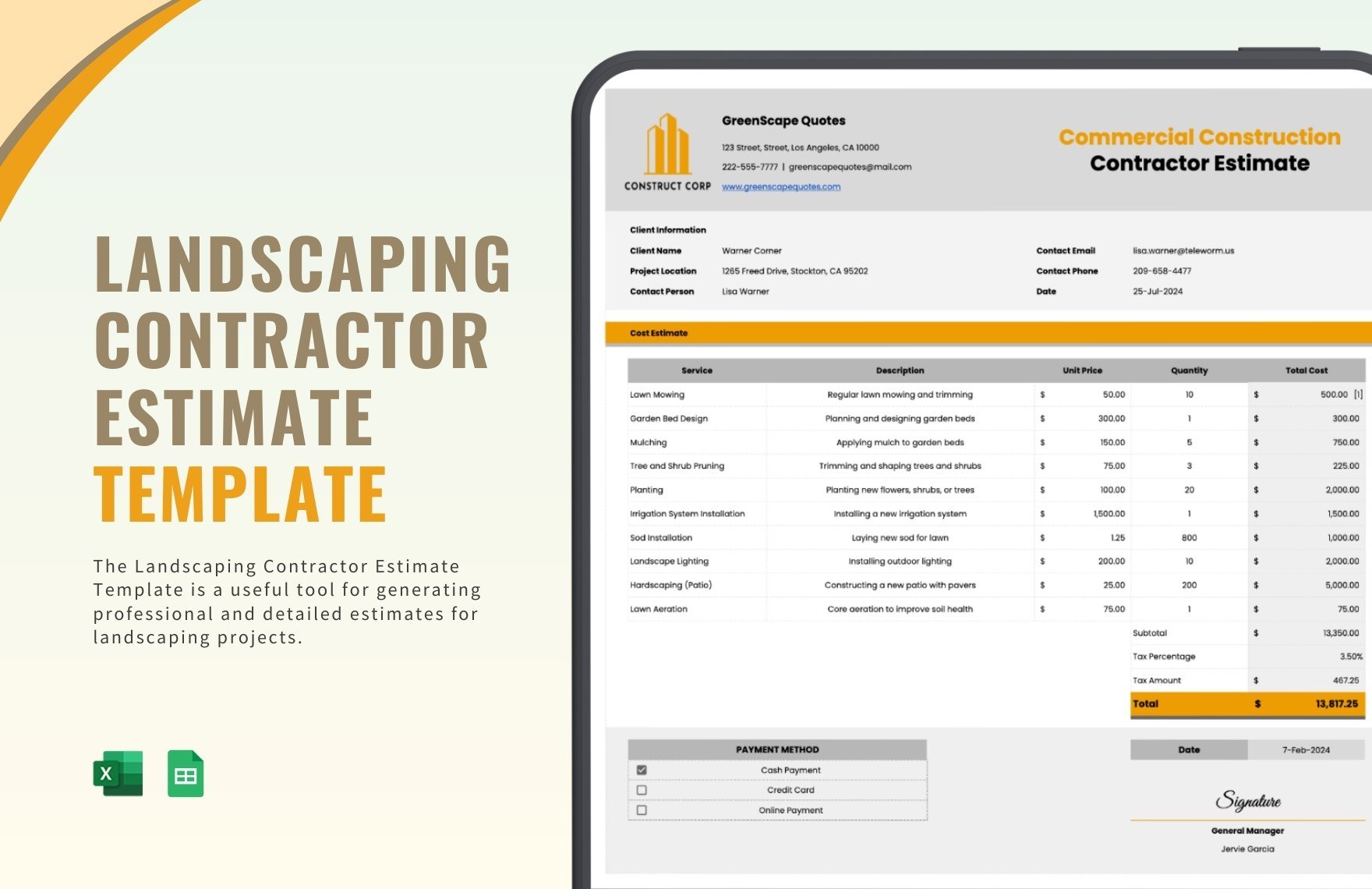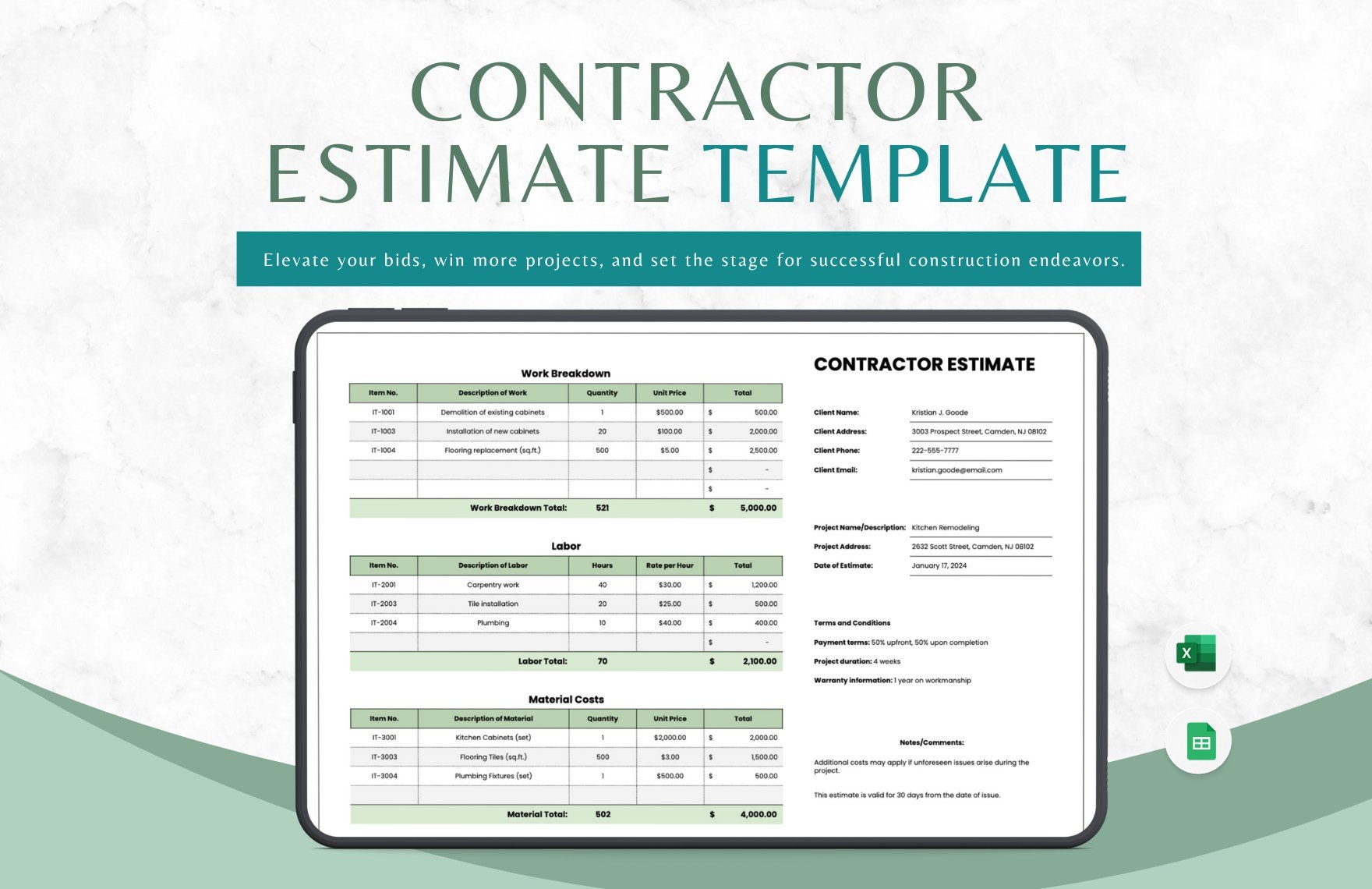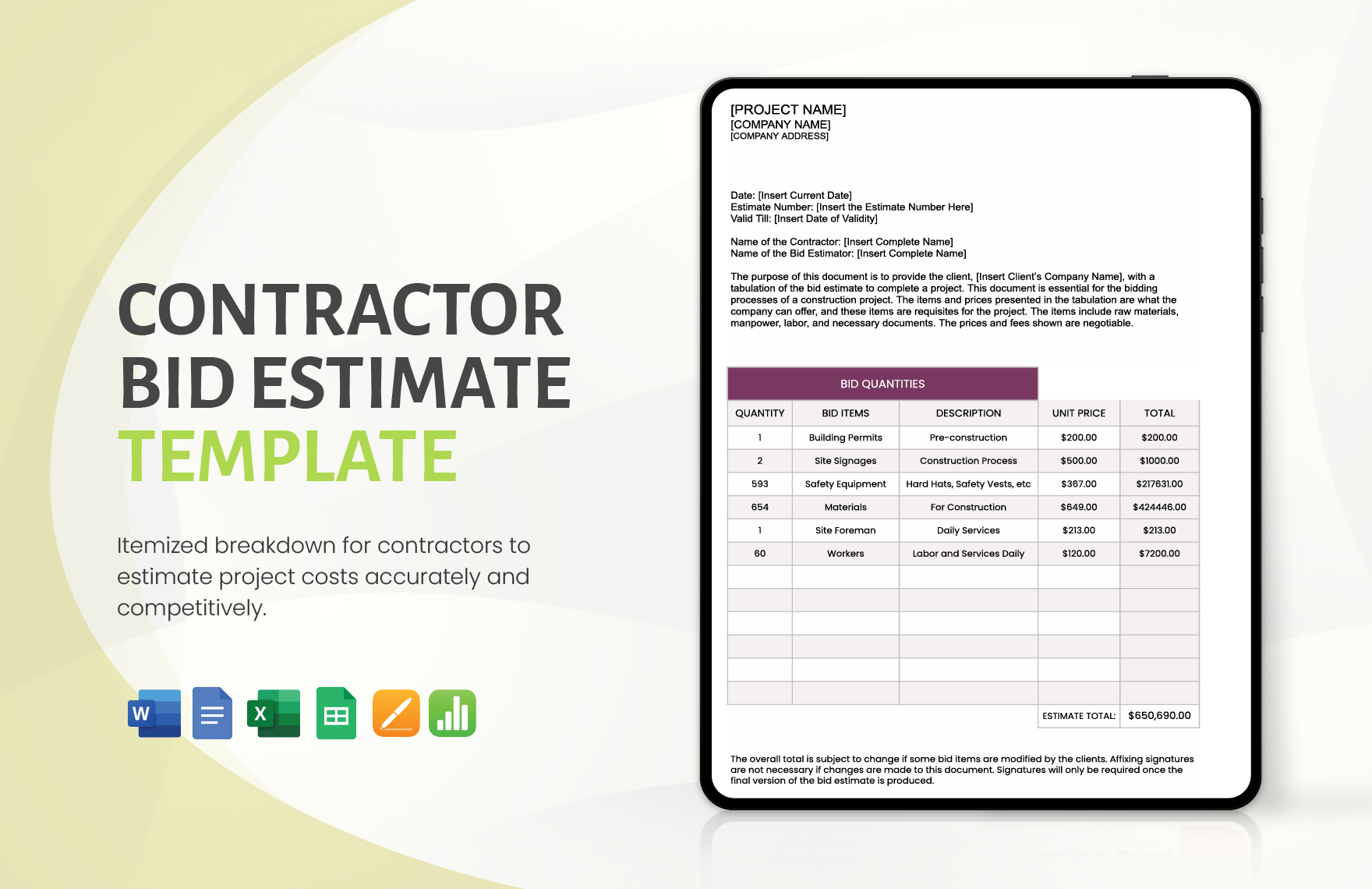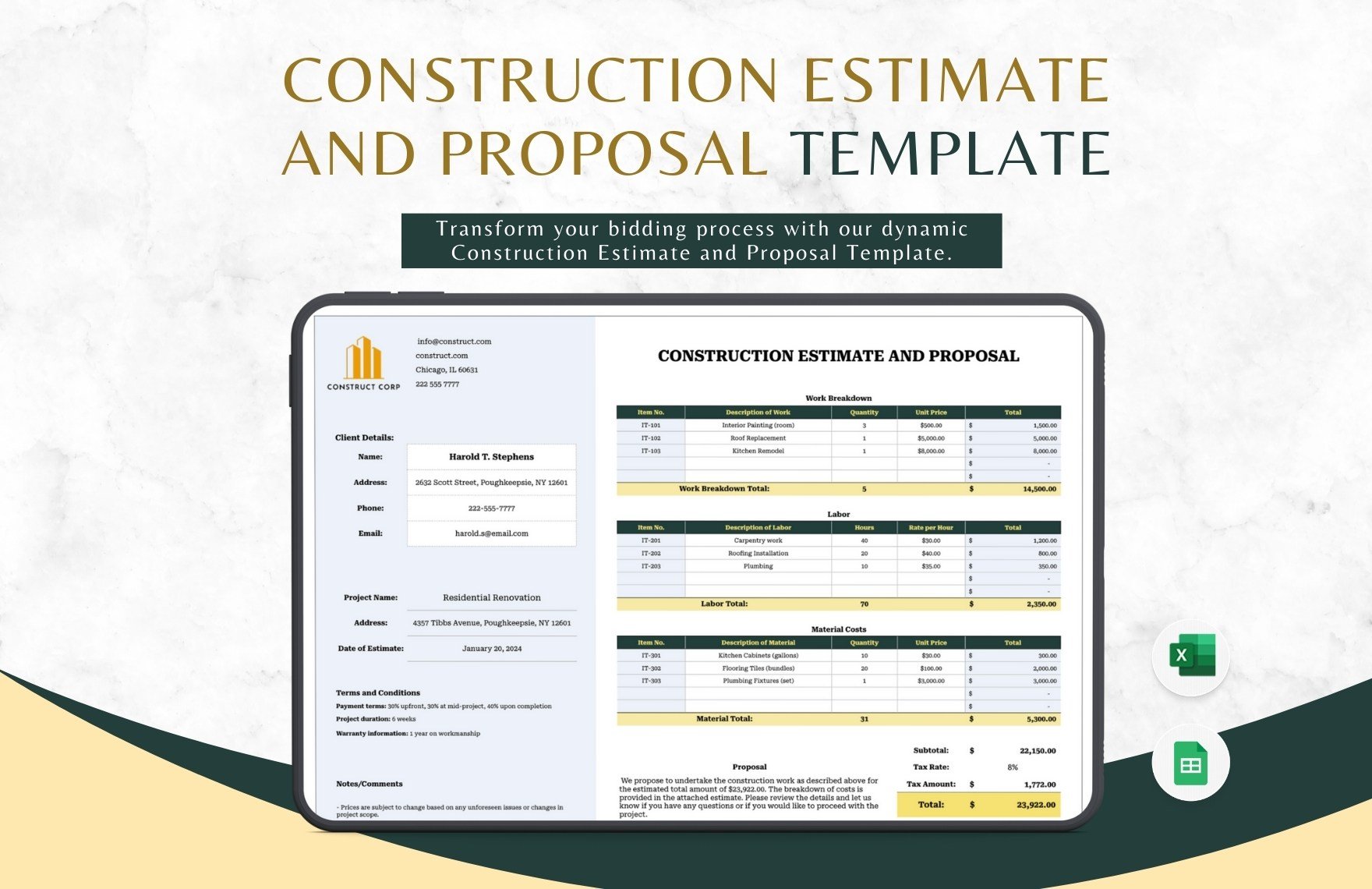According to a recent survey result conducted by Statista, after the recession, the United States once again topped the worldwide construction market with 1,293 billion U.S. dollars expenditures. This result is also an implication that construction firms mostly rely on capital to keep the business running. Construction firms involve forecasting the cost of infrastructure, which concerns both contractors and clients. With that, both ends need cost estimates to preview the construction project. Here's a contractor template that you can instantly download for free. Get this 100% customizable, easily editable in Word, Pages, Google Docs, PDF, Excel, Numbers, Sheets professionally made, high-quality, and printable template if you join any of our subscription plans today!
What Is a Contractor Estimate?
A contractor estimate sheet, also known as a construction estimate or cost estimate, is a document forecasting the cost of a construction project. This document is a significant aspect of construction planning since it contains a detailed report of expenses of building a structure. Moreover, a contract plays a more substantial role in determining project scope and feasibility. Most investors and owners rely on cost estimates in deciding whether or not to push through a project.
How to Make a Contractor Estimate?
Construction businesses evolve on building structures and infrastructure in different private and public sectors, such as housing, commercial, environmental and energy, industrial, transportation, and defense. These take a lot of works and involve jobs extending from carpentry to masonry work, painting, plumbing, and electrical installation.
More so, being the top notched economy contributor, U.S. based companies in the construction industry are forecast to peak over 1.53 trillion U.S. dollars by 2022, according to Statista. In 2018, a study conducted by Forbes showed a result that found out the wage of skilled construction workers increased drastically. The main reason for the rise is when the demand for workers increases, the wages of those workers are favorable to rise as well. The rise of wages in the sector is in the middle of 2.6 percent to 2.9 percent over the last two years, Forbes said.
Since the rise of construction businesses brought beneficial commissions, it's no surprise if small-sized subcontractors emerge in the industry. So, we made a list of steps you can refer to if you begin a construction start-up today. Stick around and make your contractor estimate now.
1. Analyze the Project
The process of making a construction cost estimate involves a lot of elements. The possibility to underestimate a certain project is likely to happen, but it is avoidable. Companies that have been making cost estimates for a long time are likely to understand how the process goes. However, construction estimates are dependent on what type of project to be built. Thus, it is important to analyze the project before making approximations.
2. List the Deliverables
Deliverables are the expected areas where the estimation would take place. Usually, there are three major divisions of a construction project and budget plan: pre-construction phase, construction phase, and post-construction phase. Each area focuses on certain civil works. For example, the pre-construction phase includes the clearing of the project site. Hence, construction managers must allocate resources to implement it. Then, the construction phase comes right after whenever the site is ready. In this phase, masonry works, rebar works, and electrical installation will take place. And so on. Moving forward, always consider dividing each phase into narrower tasks. In this way, the tasks will become more workable.
3. Identify the Materials
Like any project, a business contract requires resources to be successful. Aside from the monetary resources, the main driving source of a construction project is civil work materials and equipment. Without these means, operating a construction project is unimaginable. As a cost estimator, consider listing all the materials needed. And conduct take-offs to at least three separate hardware. Take-offs likely determine which hardware to purchase the materials from.
4. Allocate Tasks
We've already known that materials are significant in construction corporate projects, so as labor force and equipment. Be particular with allocating the tasks since some civil works are only useful within a particular period of the project. For example, cranes are only applicable when the structure is starting to build up higher. If you can pinpoint which task is relevant and not, it will lessen the variance in your cost estimate.
5. Consider Variance
An established company is likely to allocate a greater budget than the cost estimate. The reason for this is there are unpredictable events that can affect construction costs. Reserve a construction contingency fund to cover up the additional or unexpected costs.
